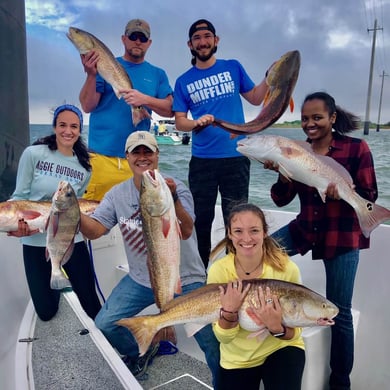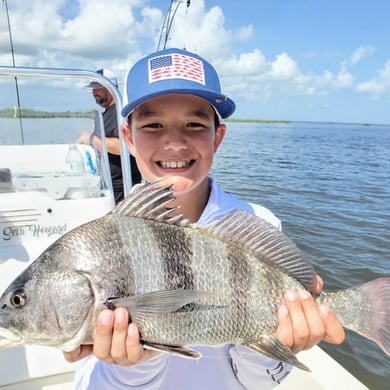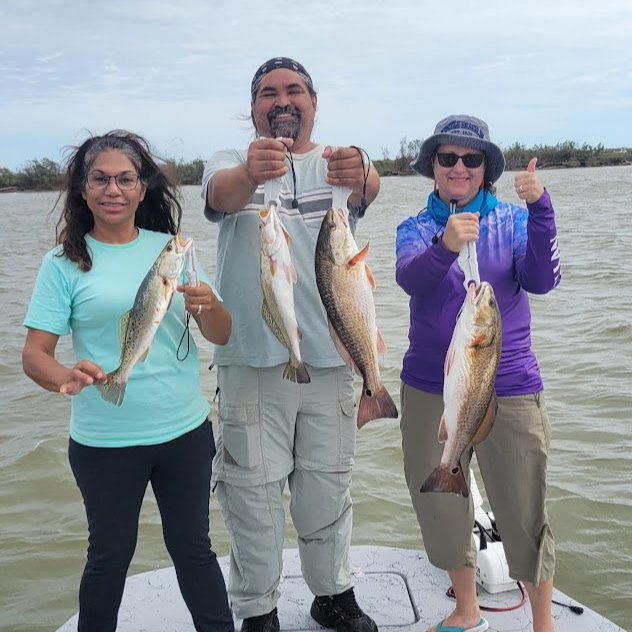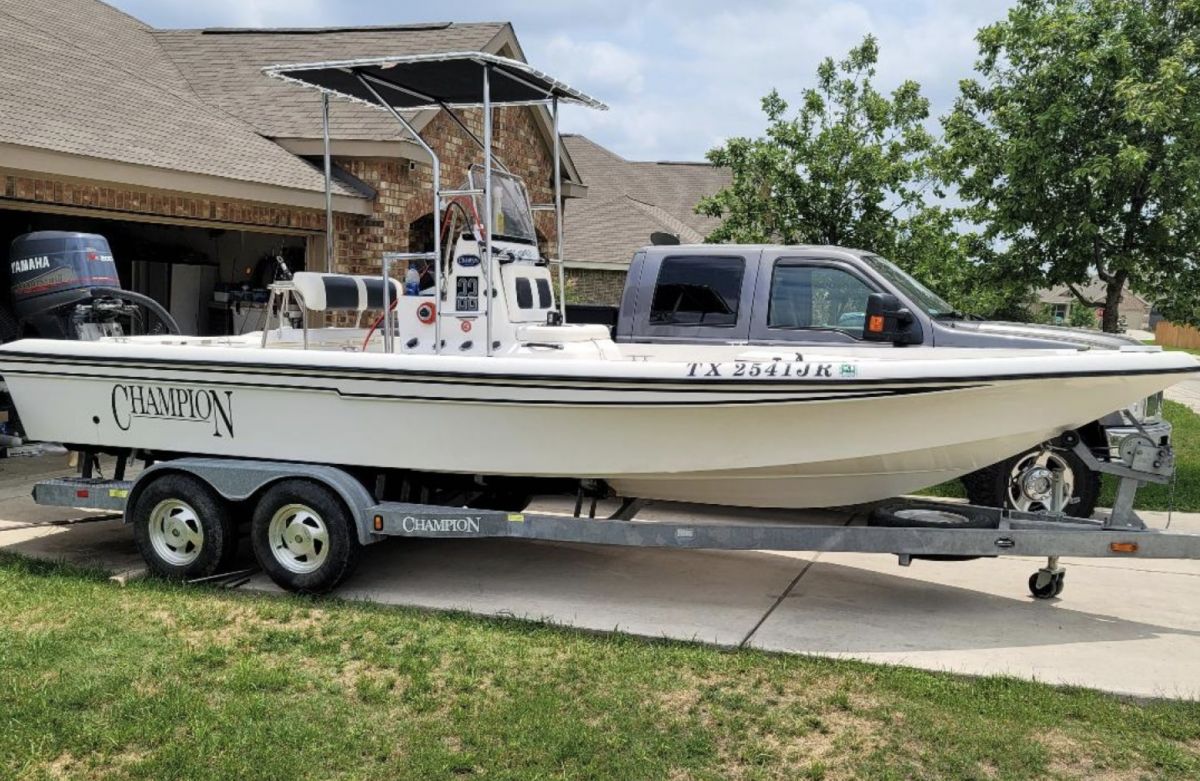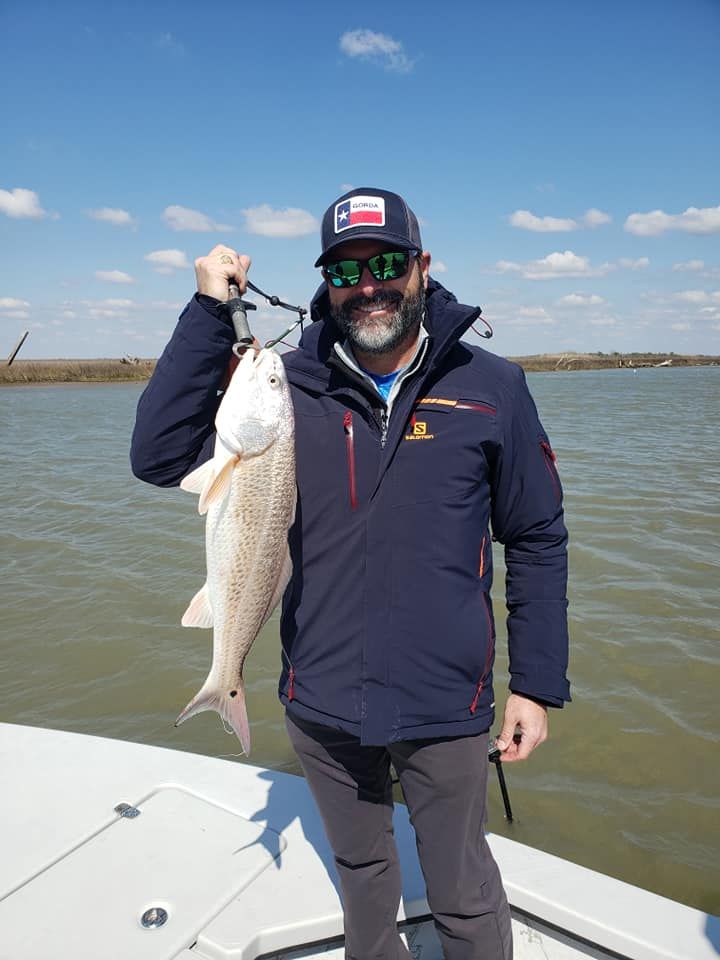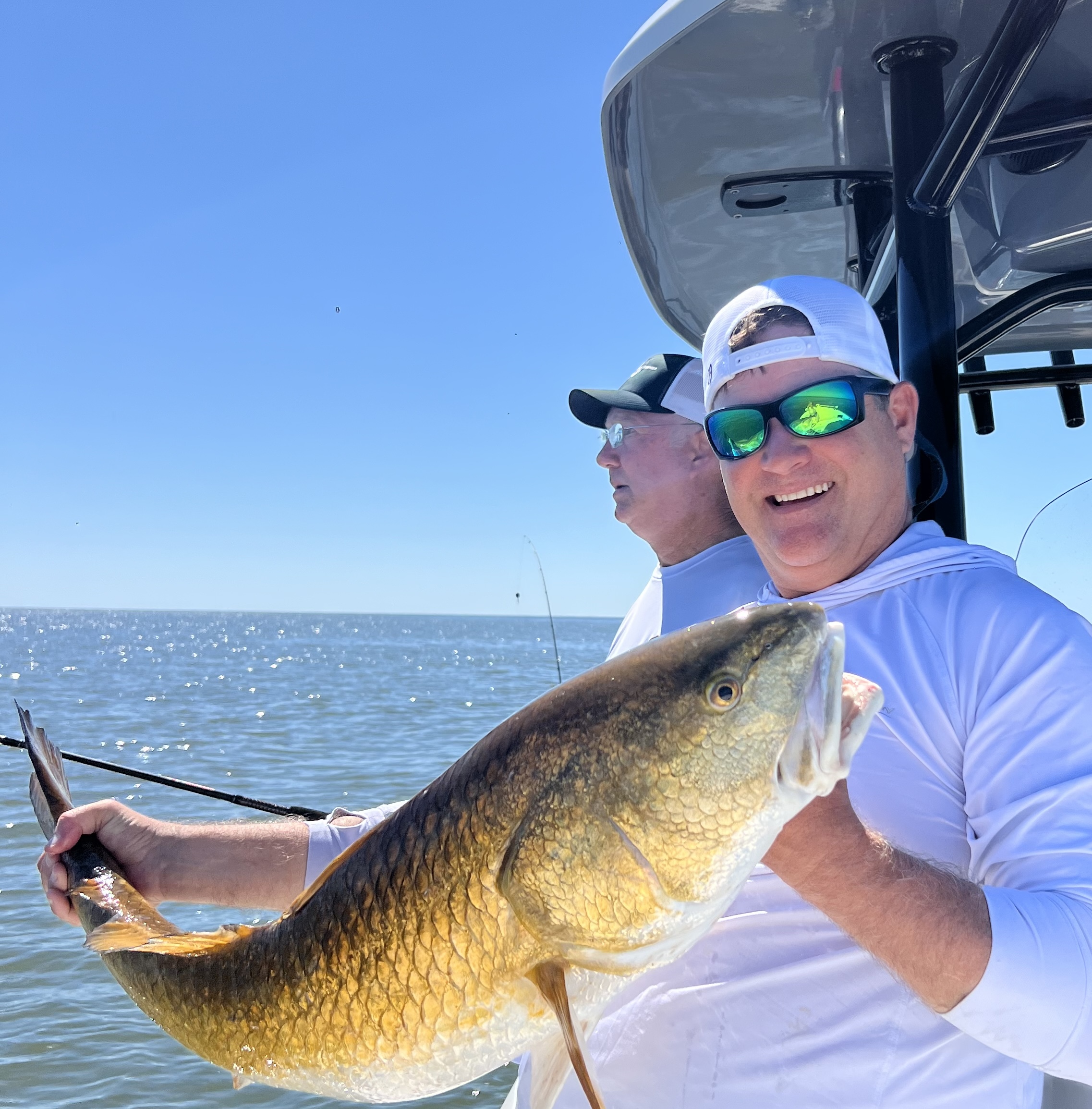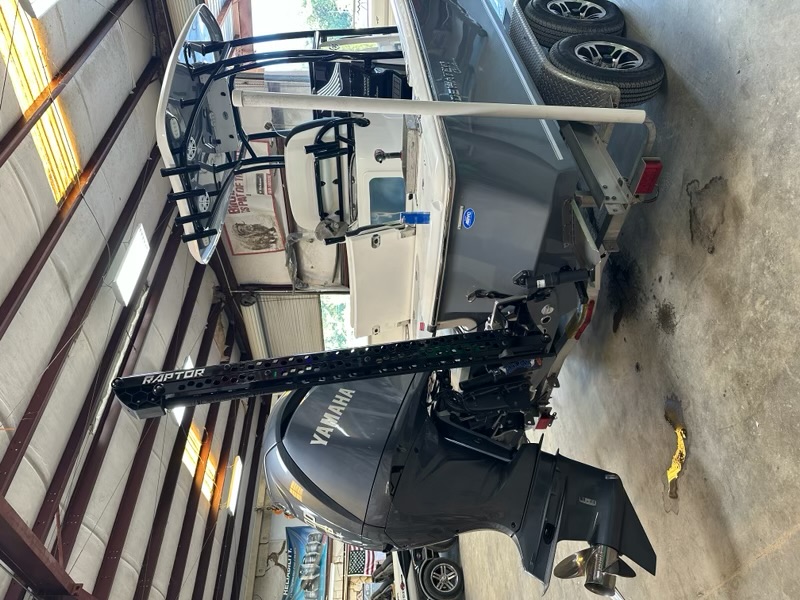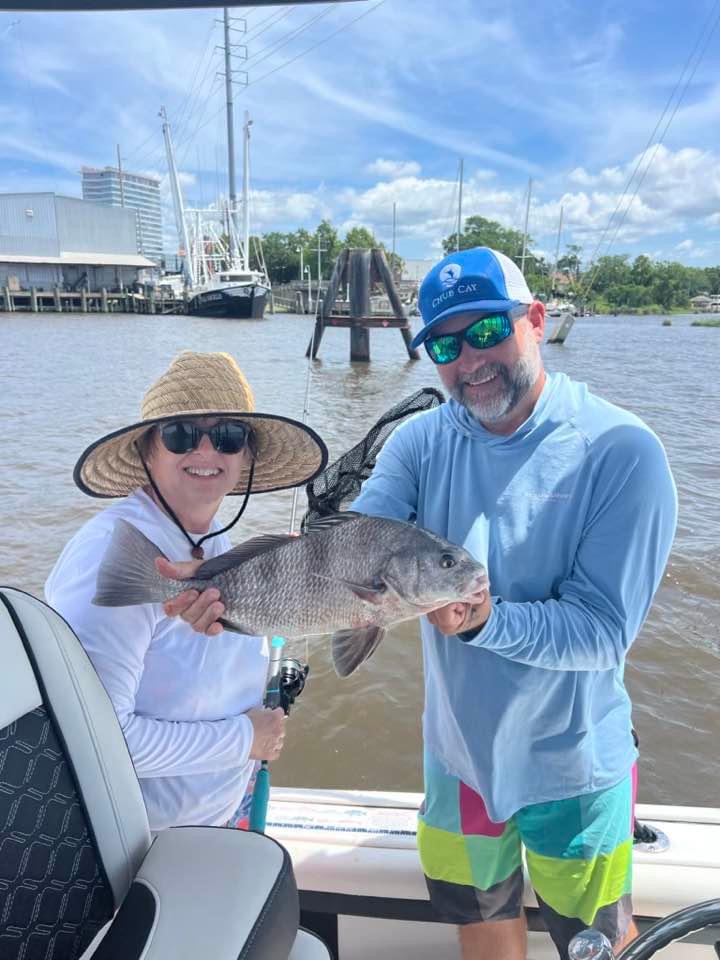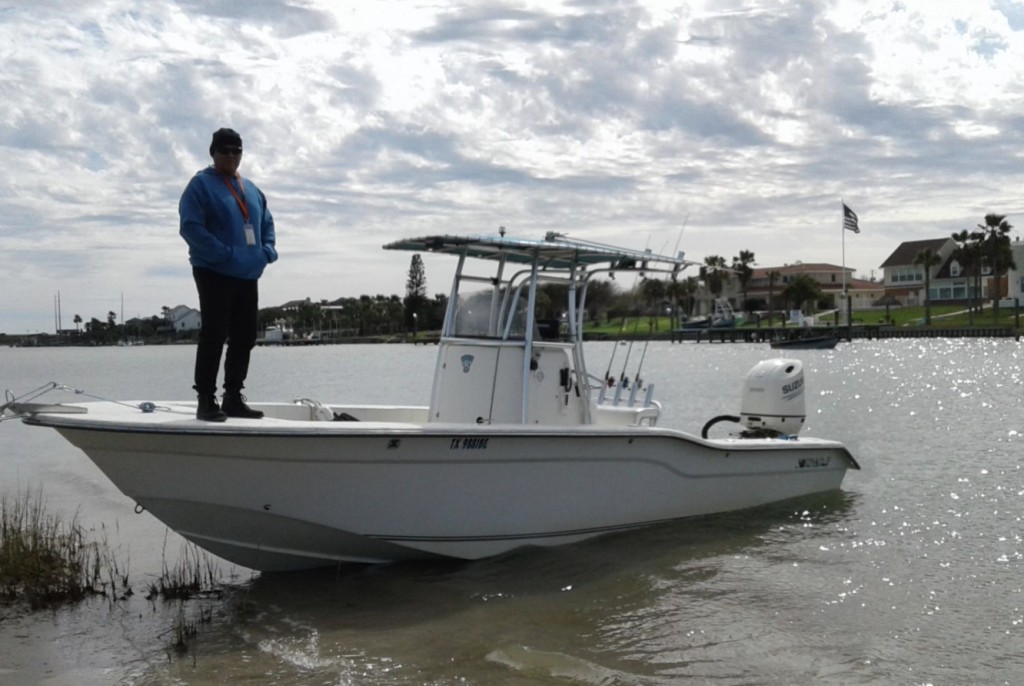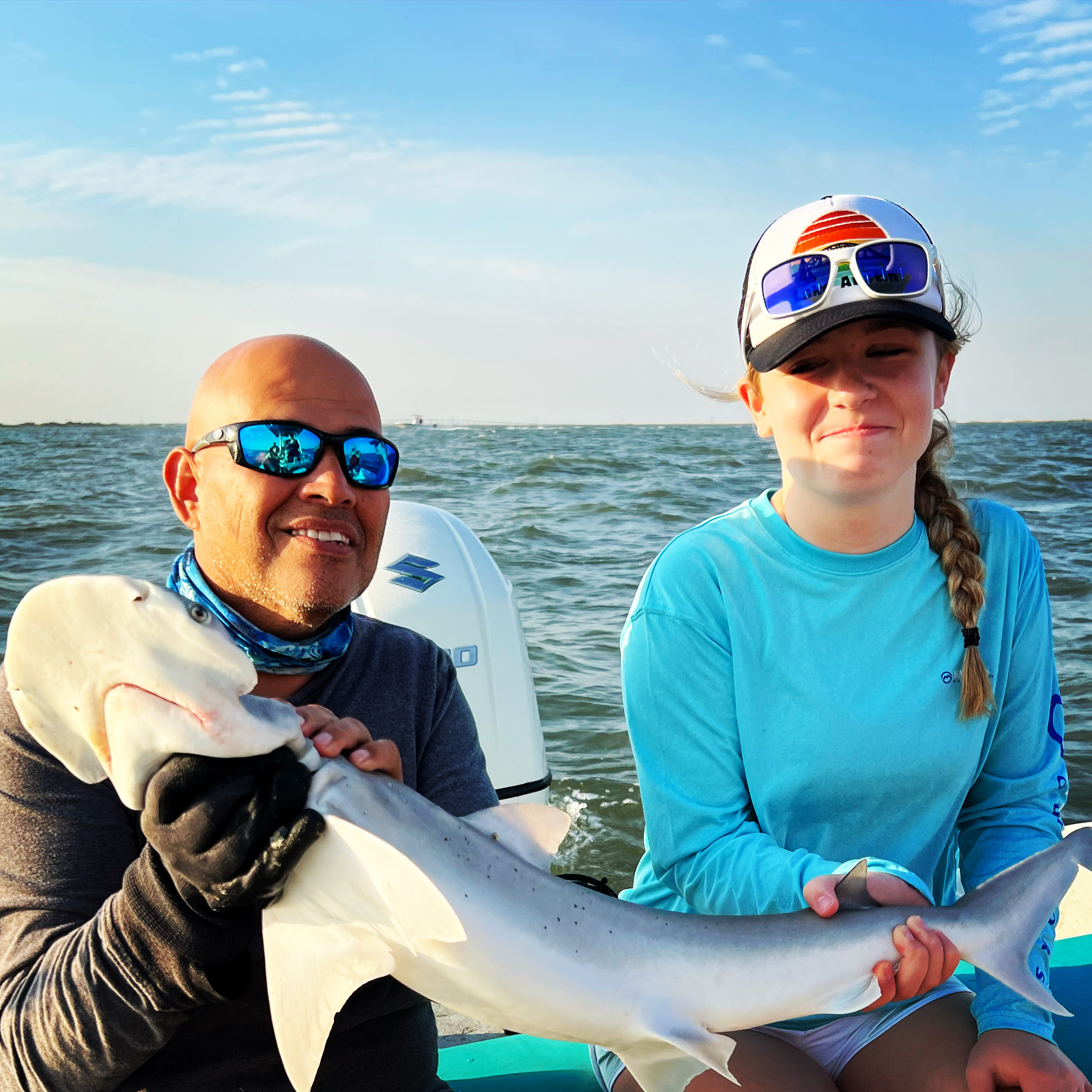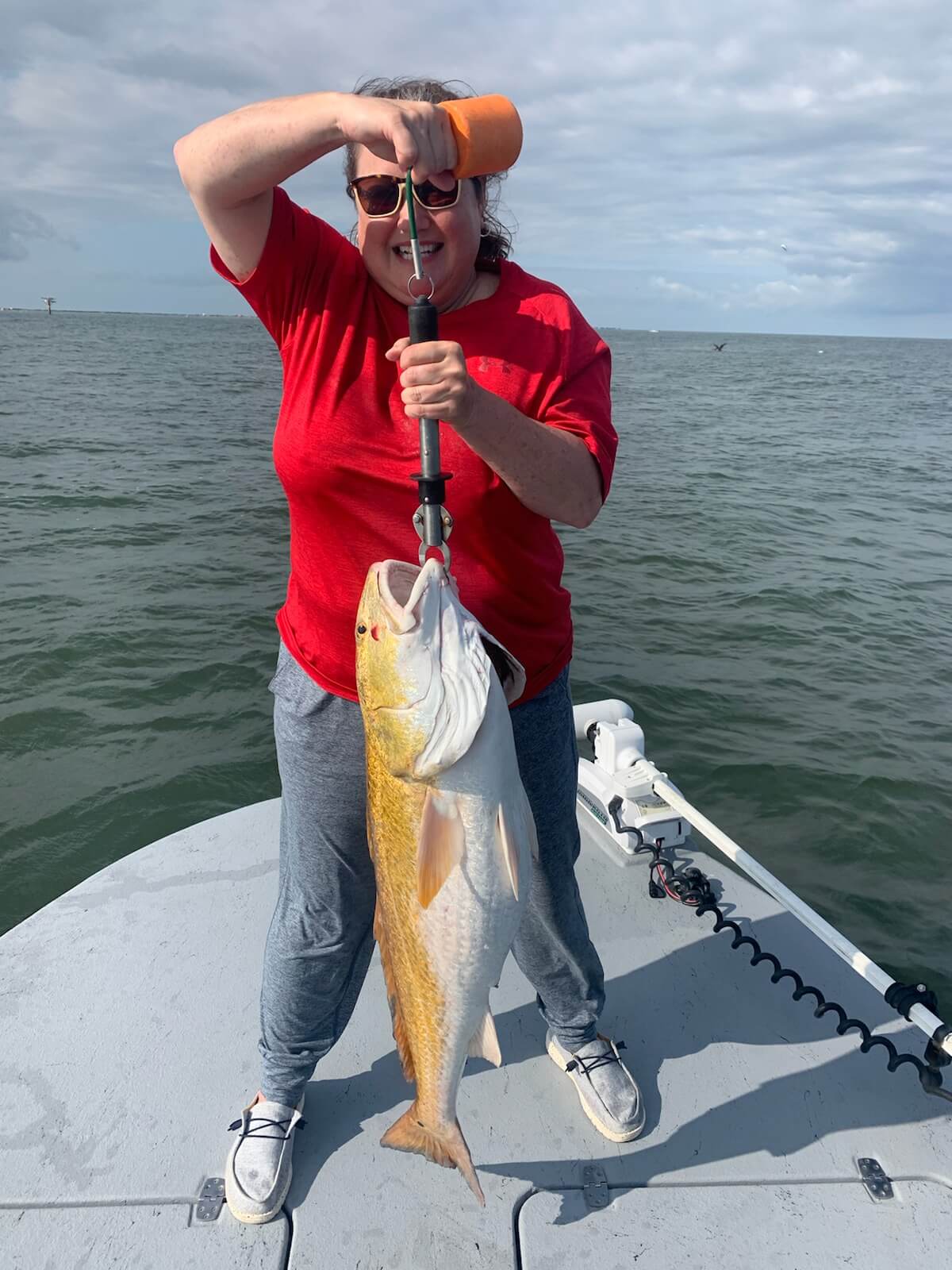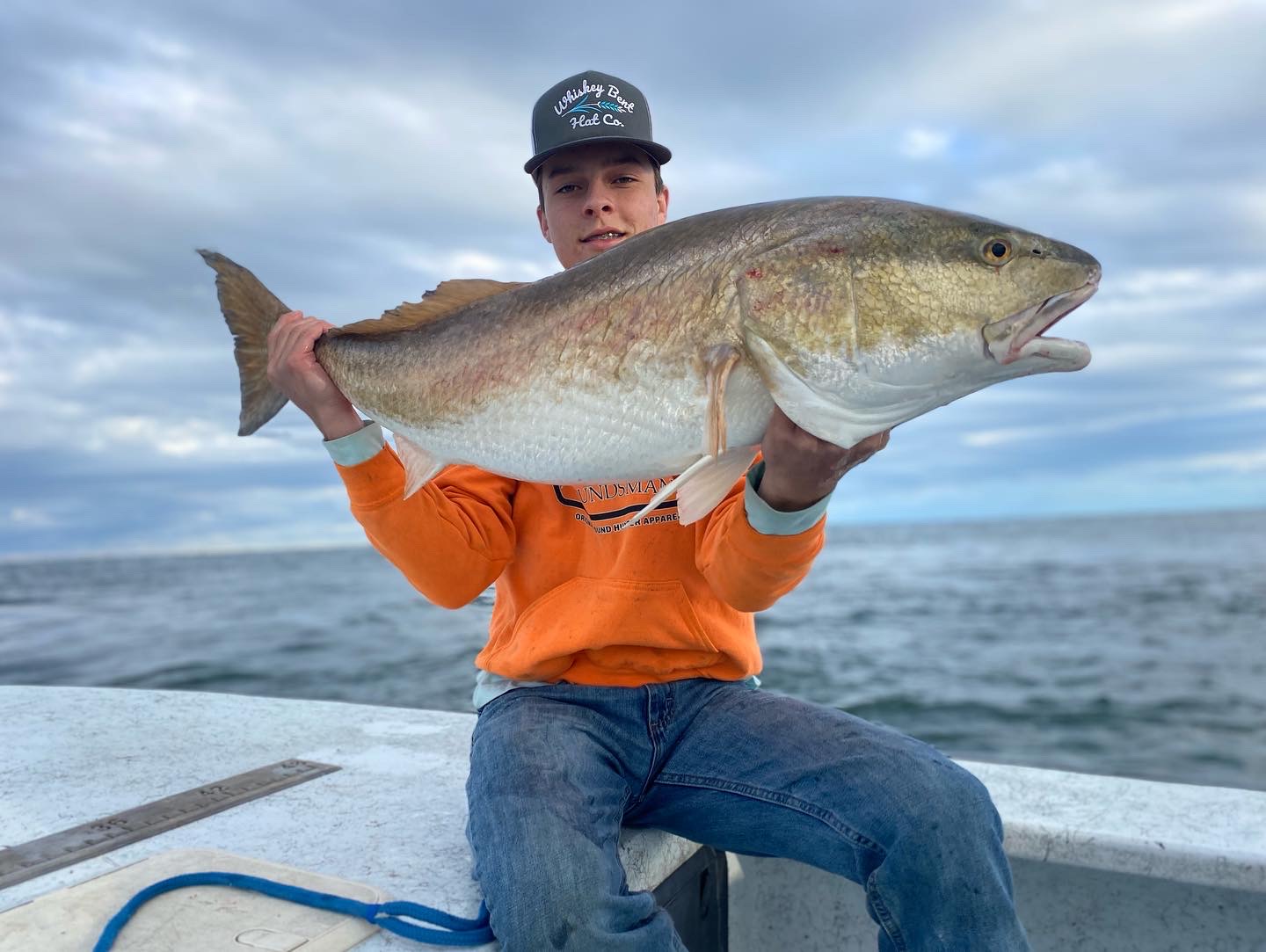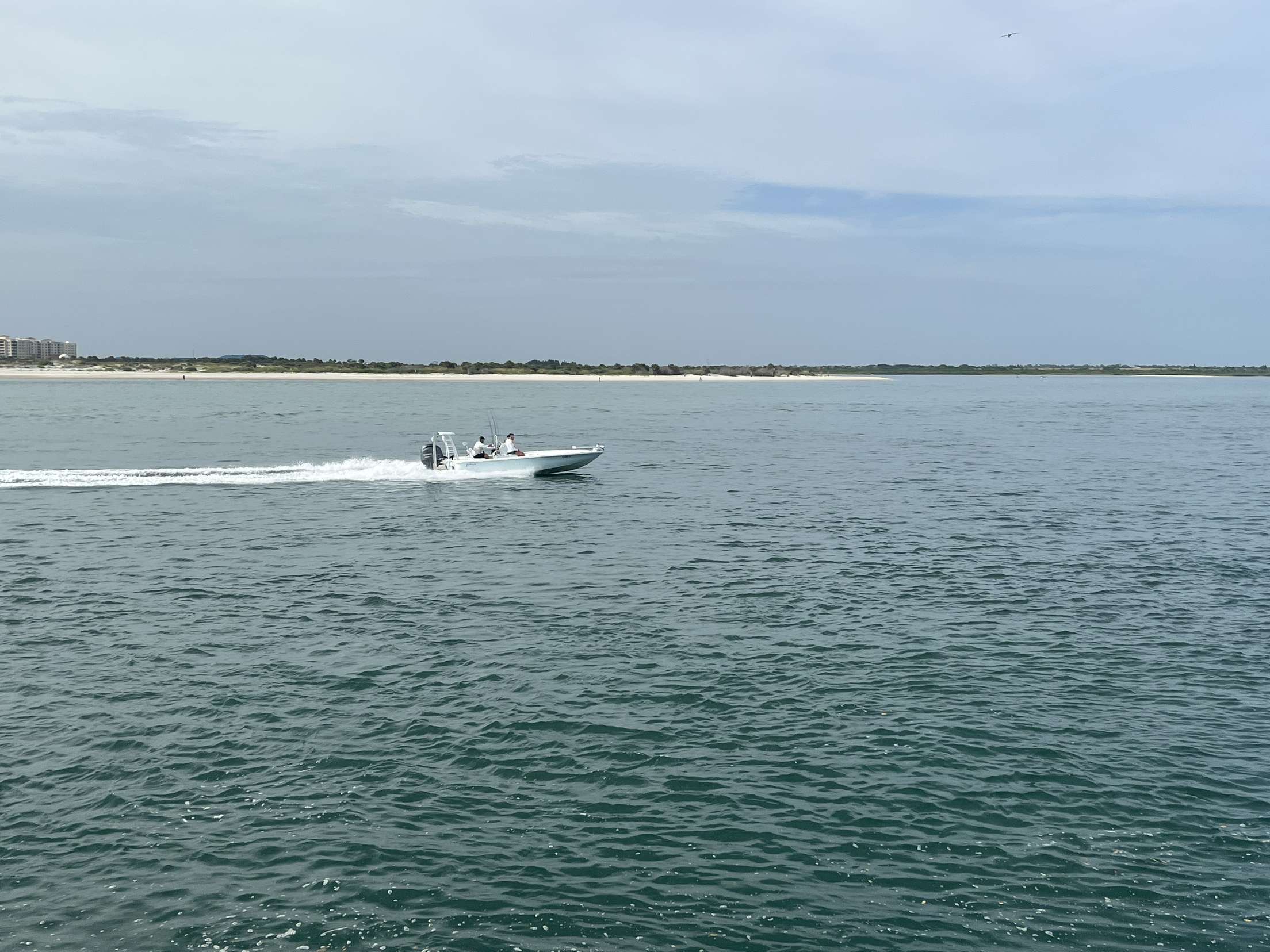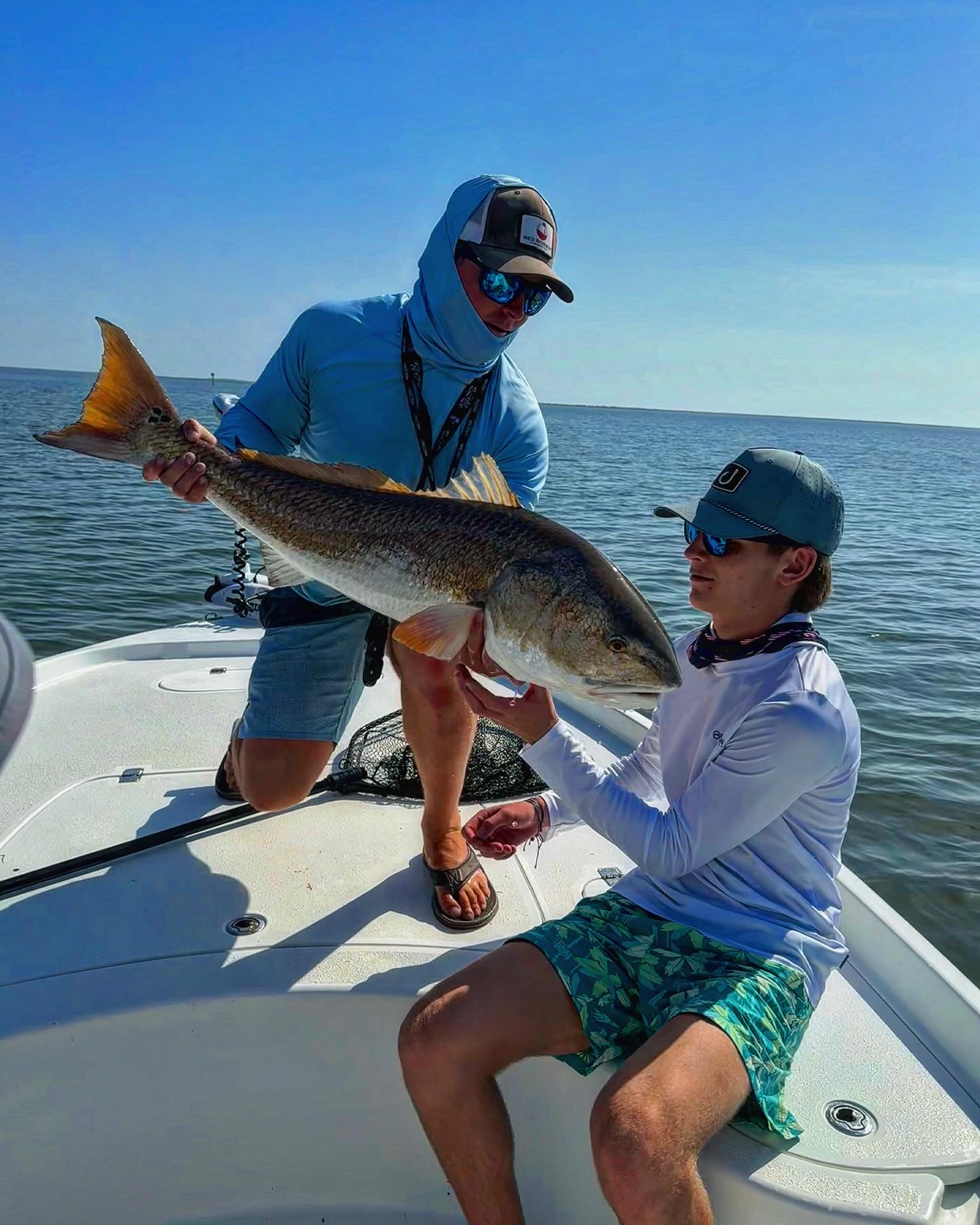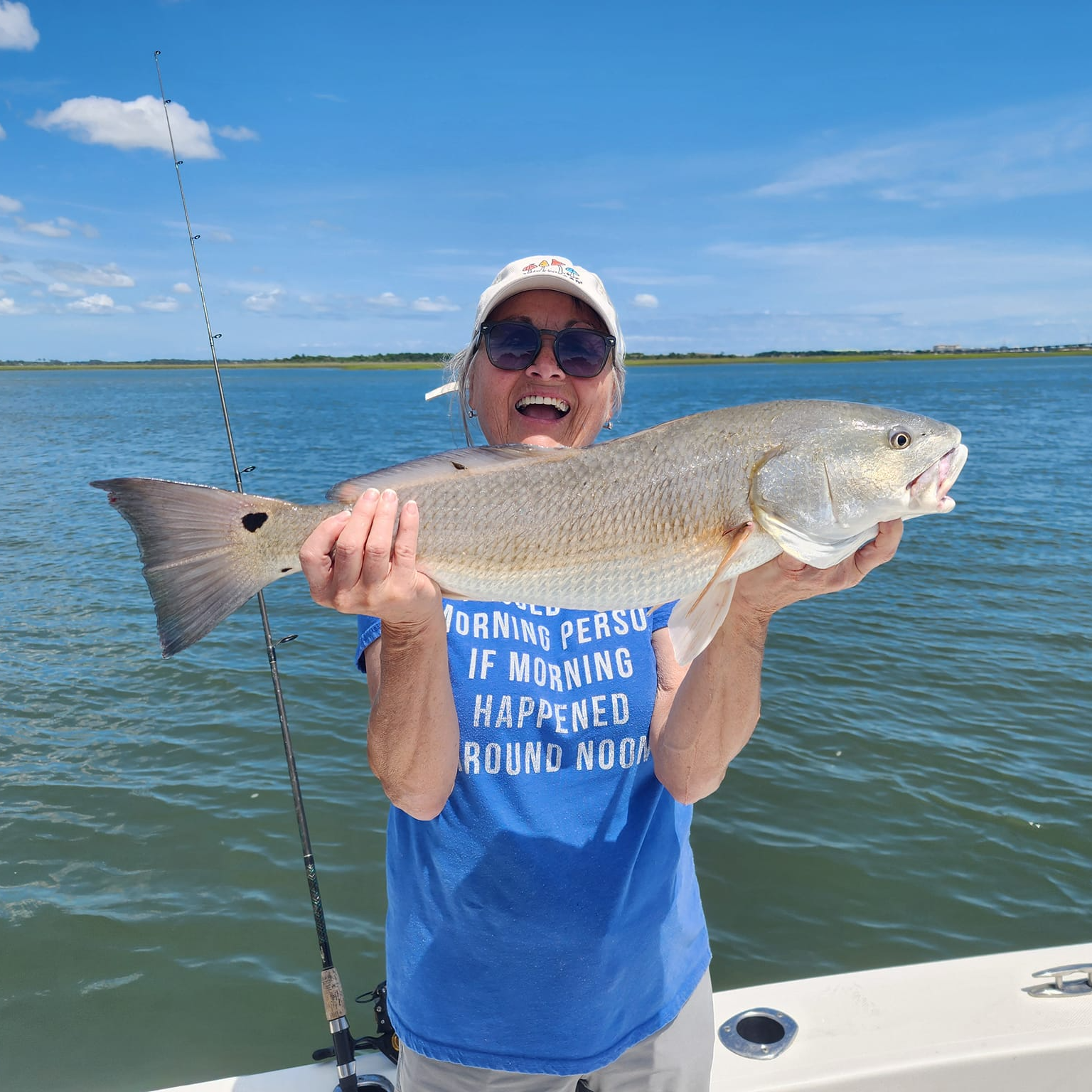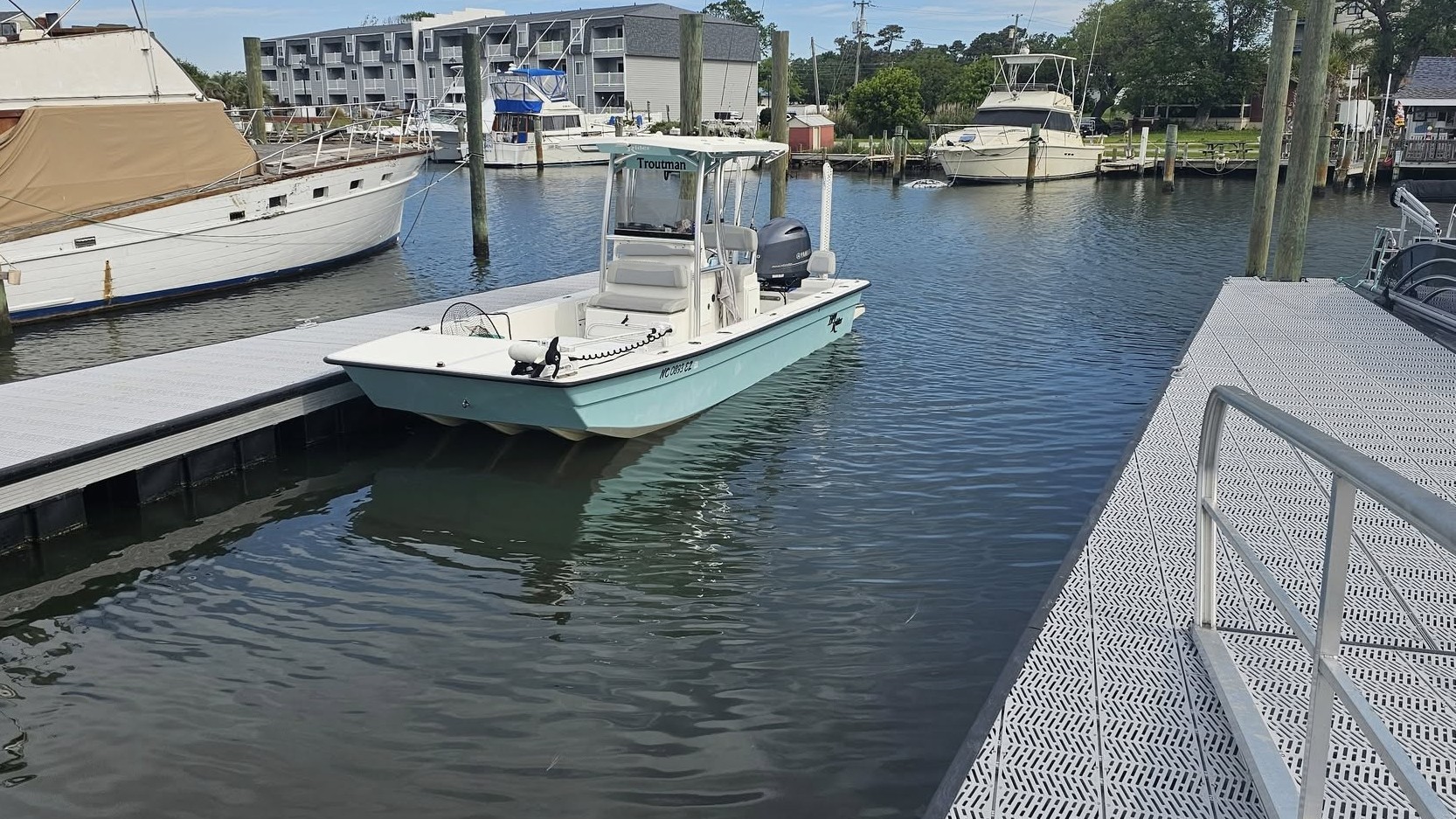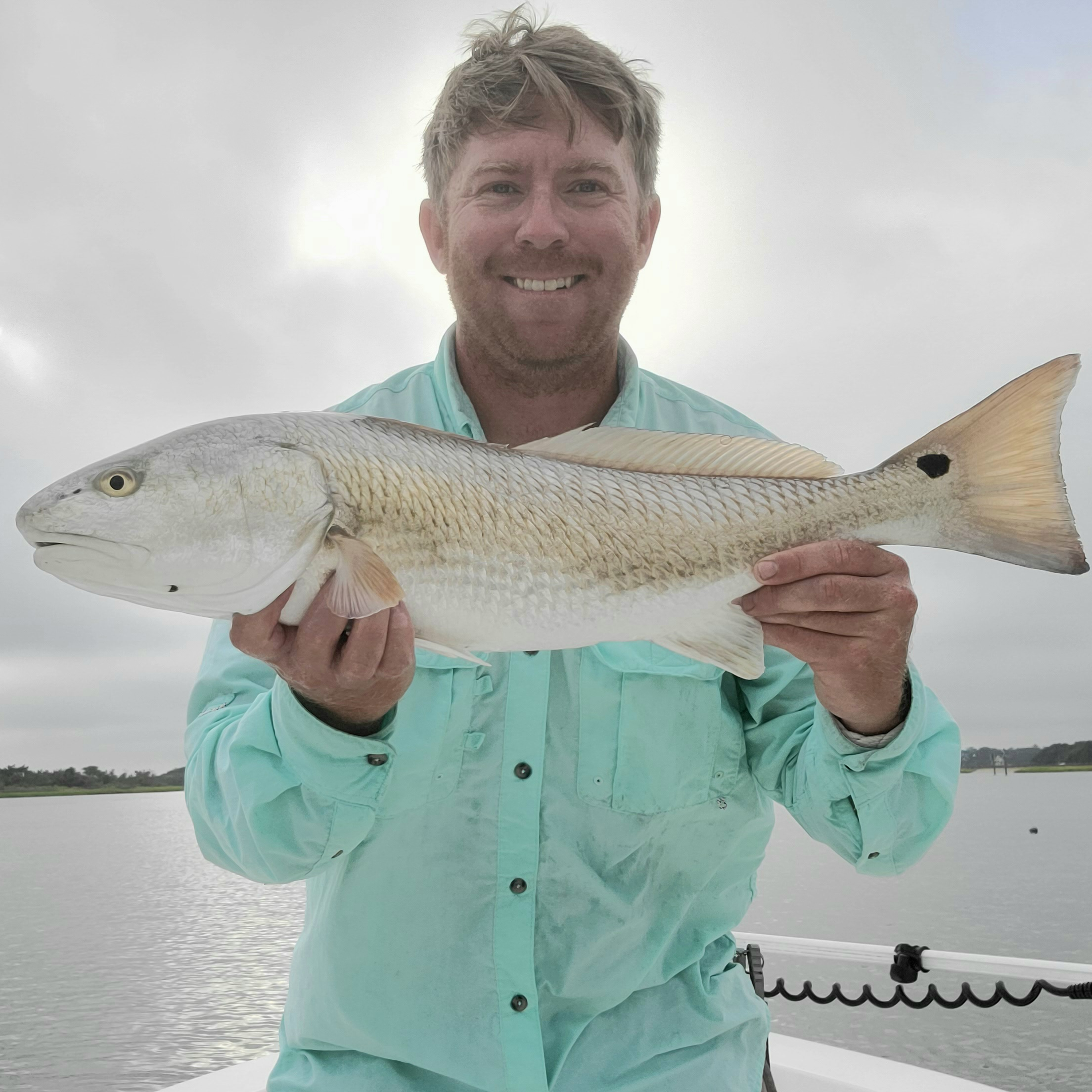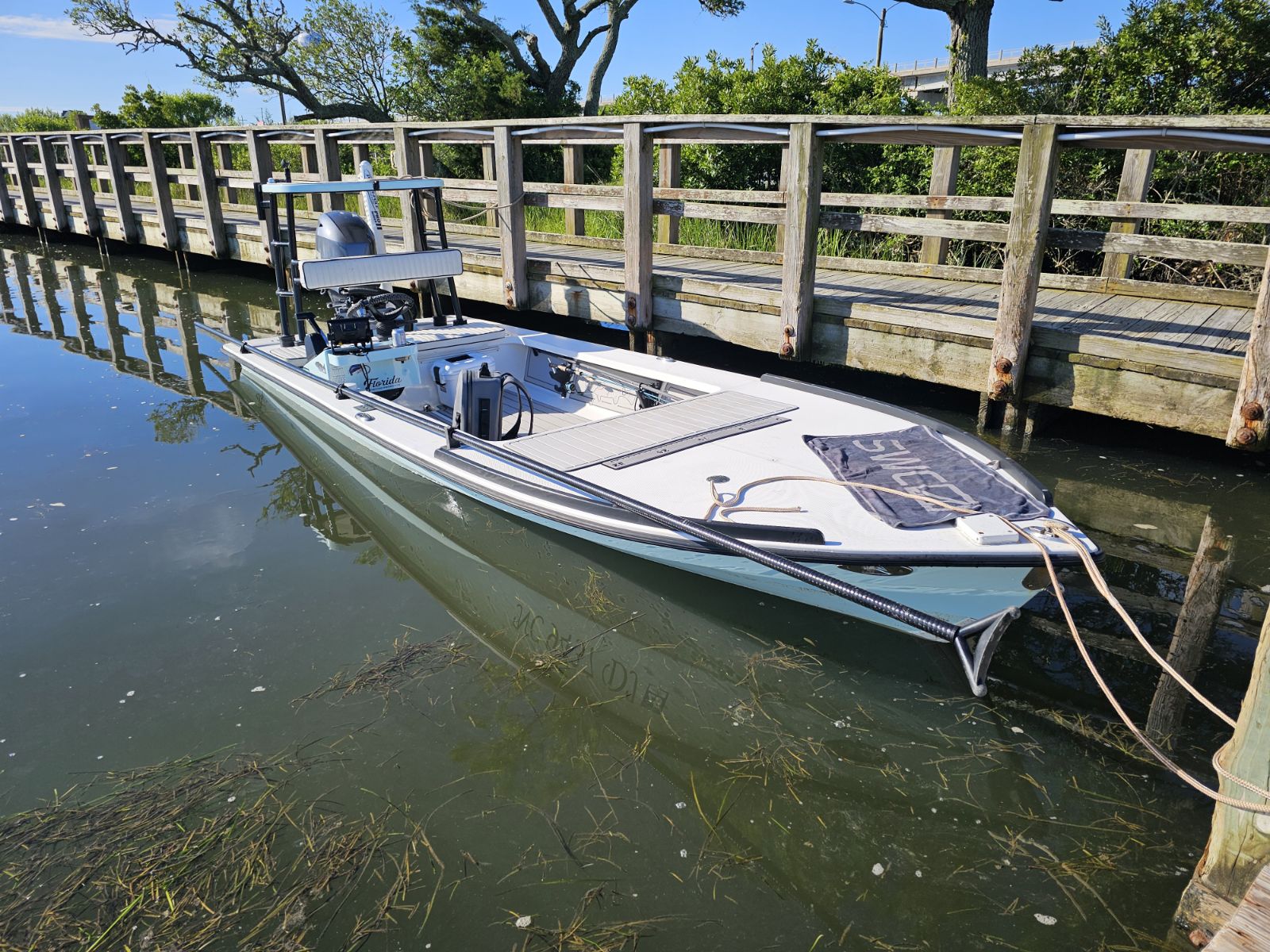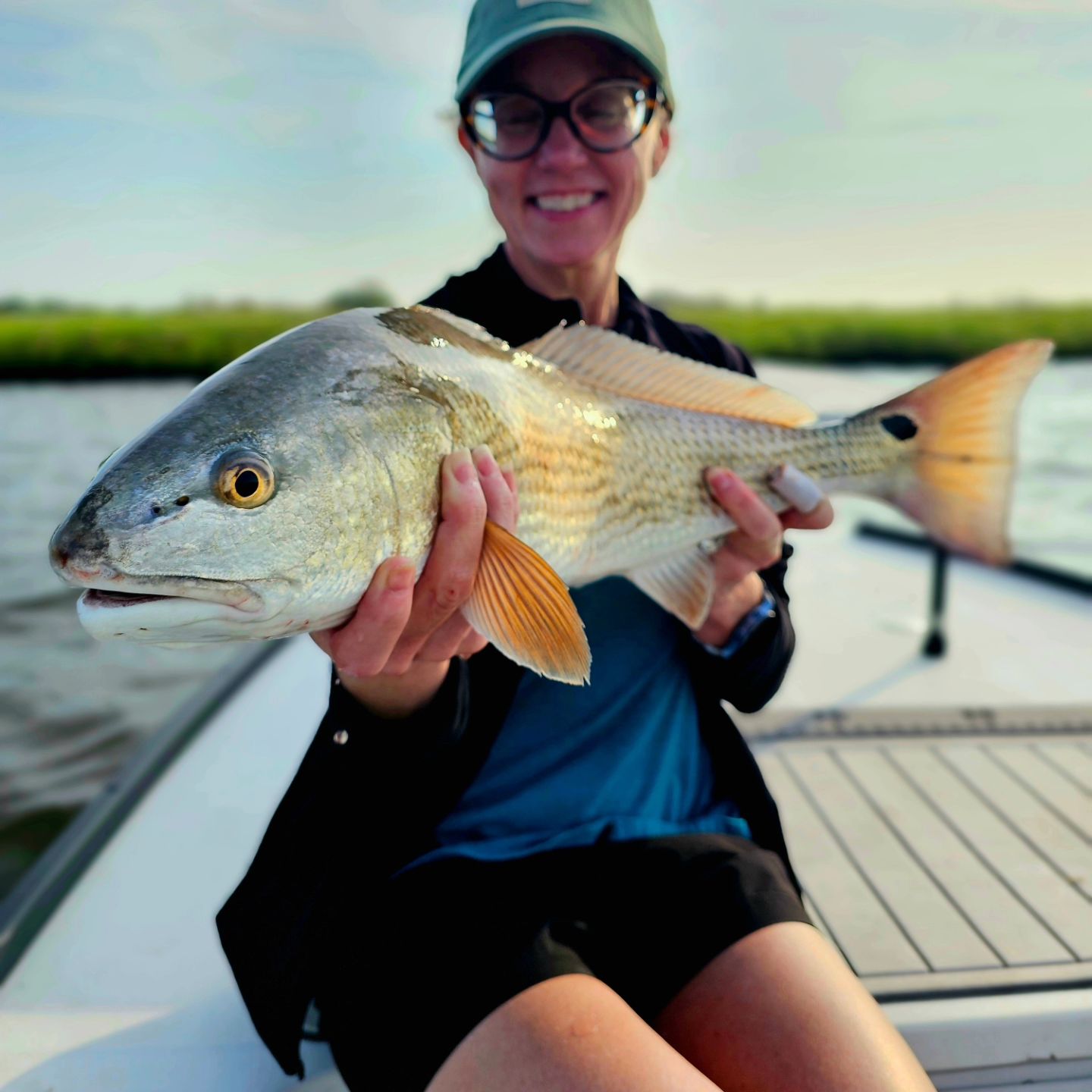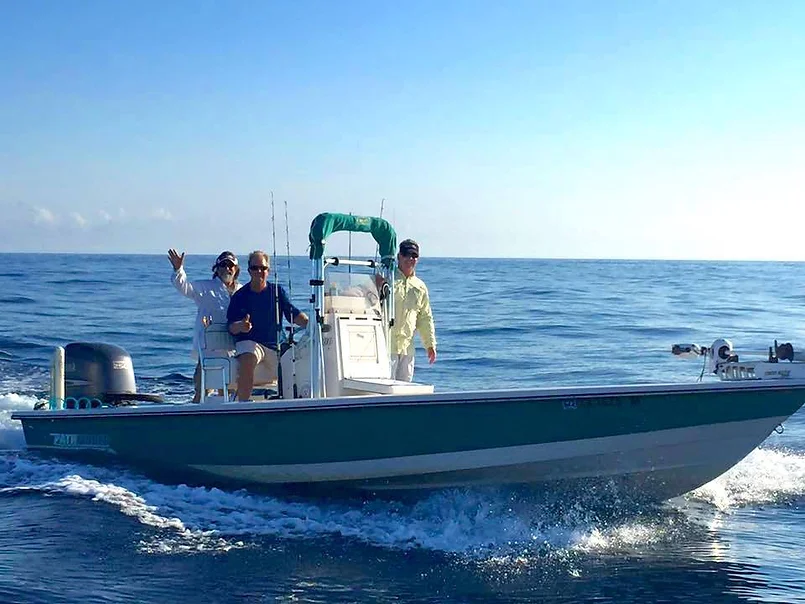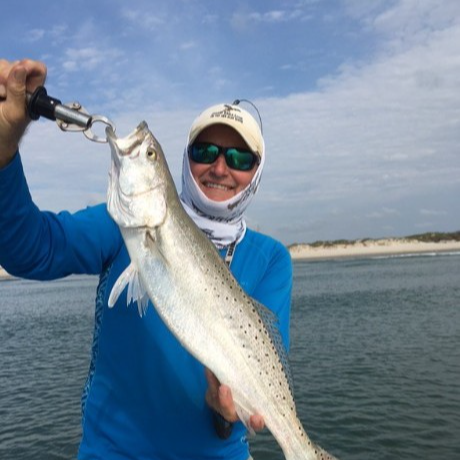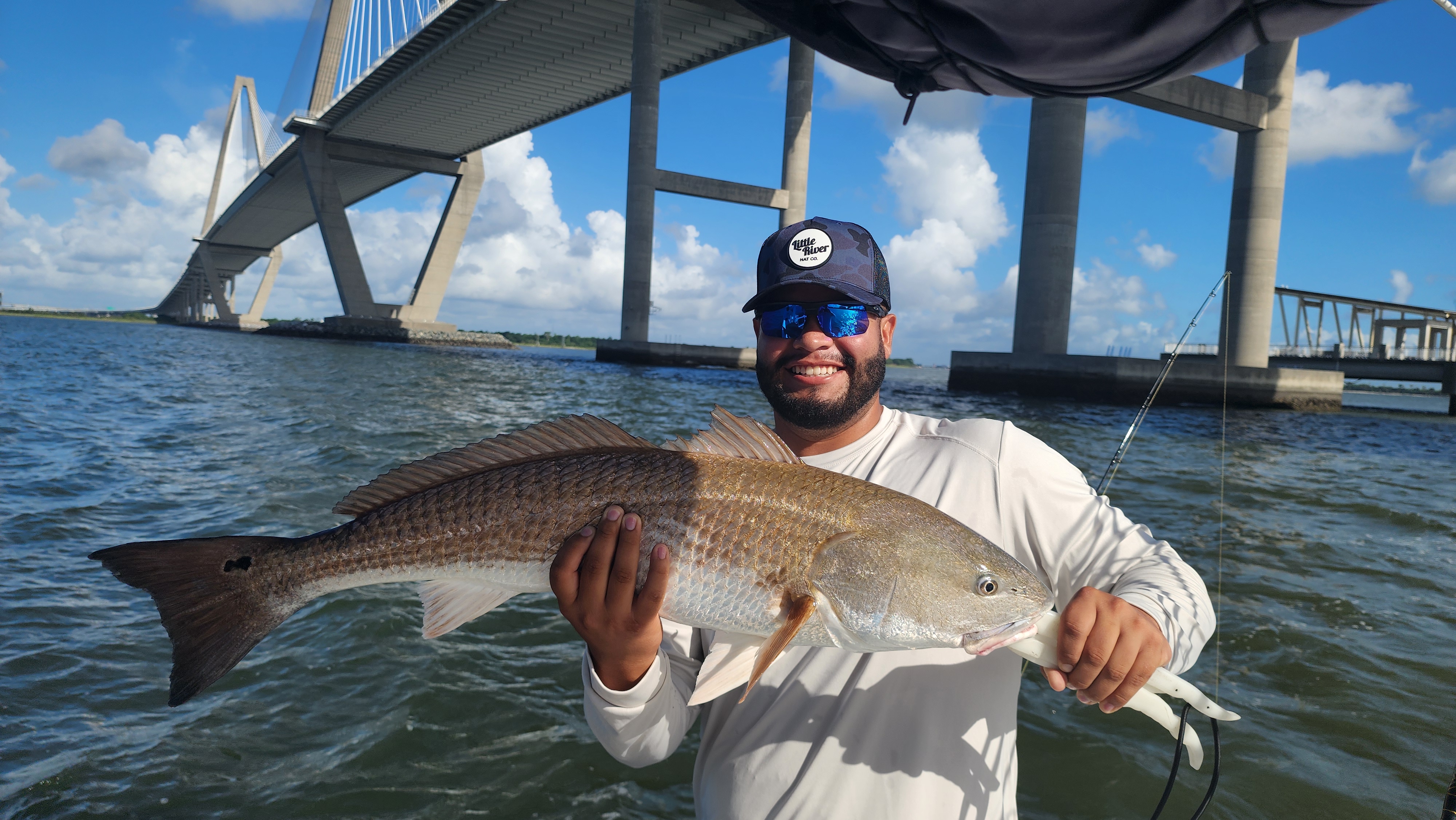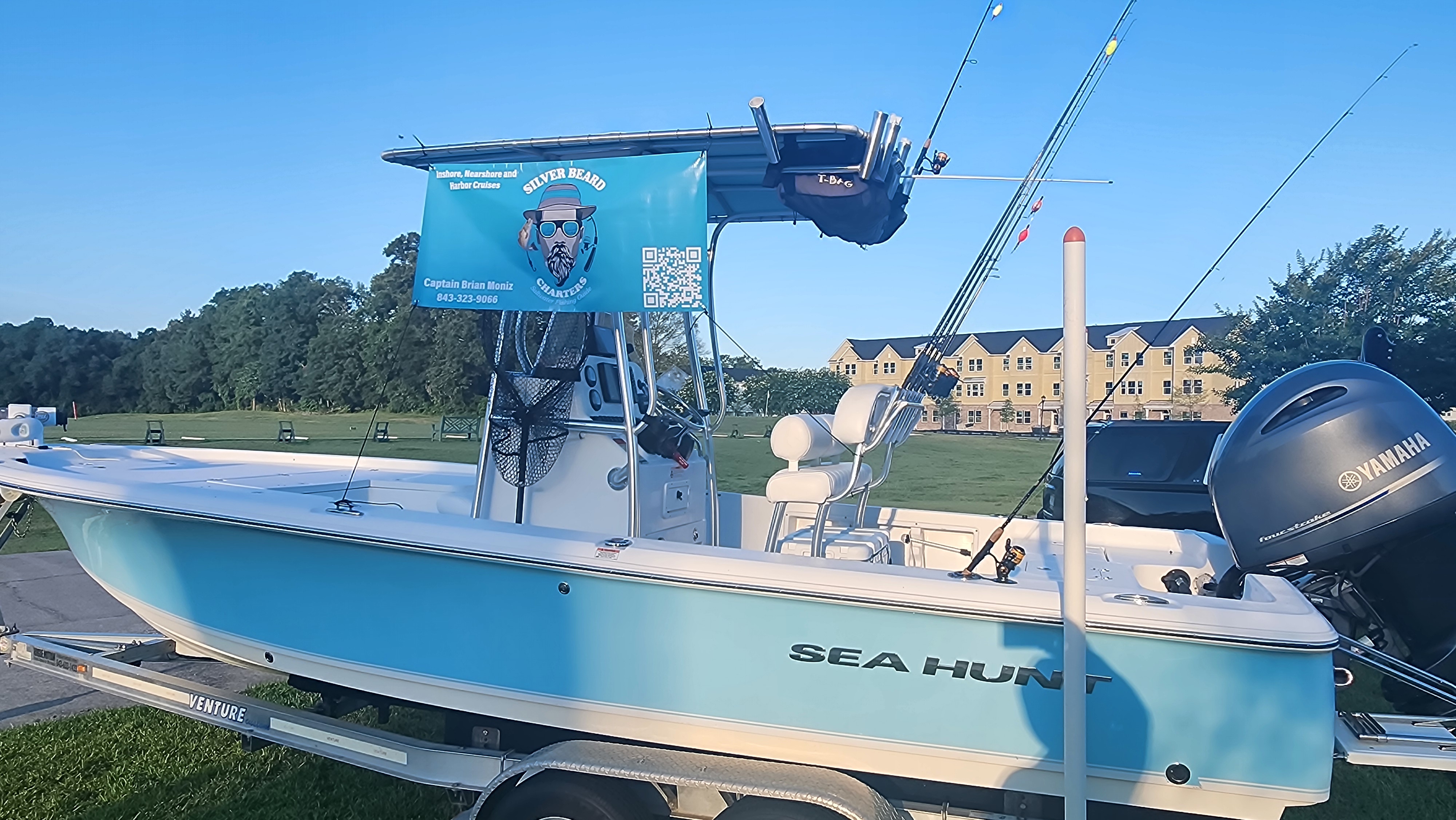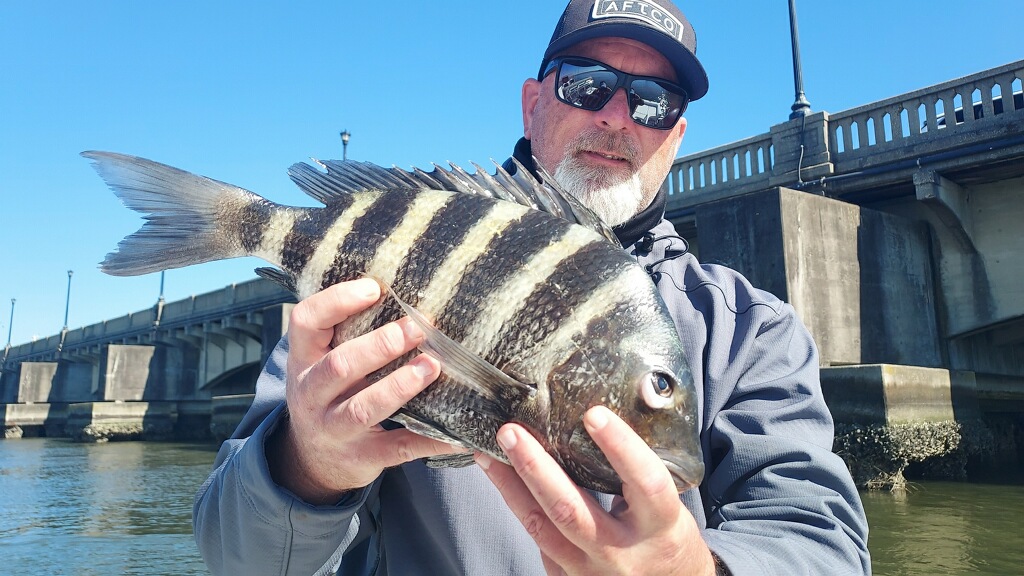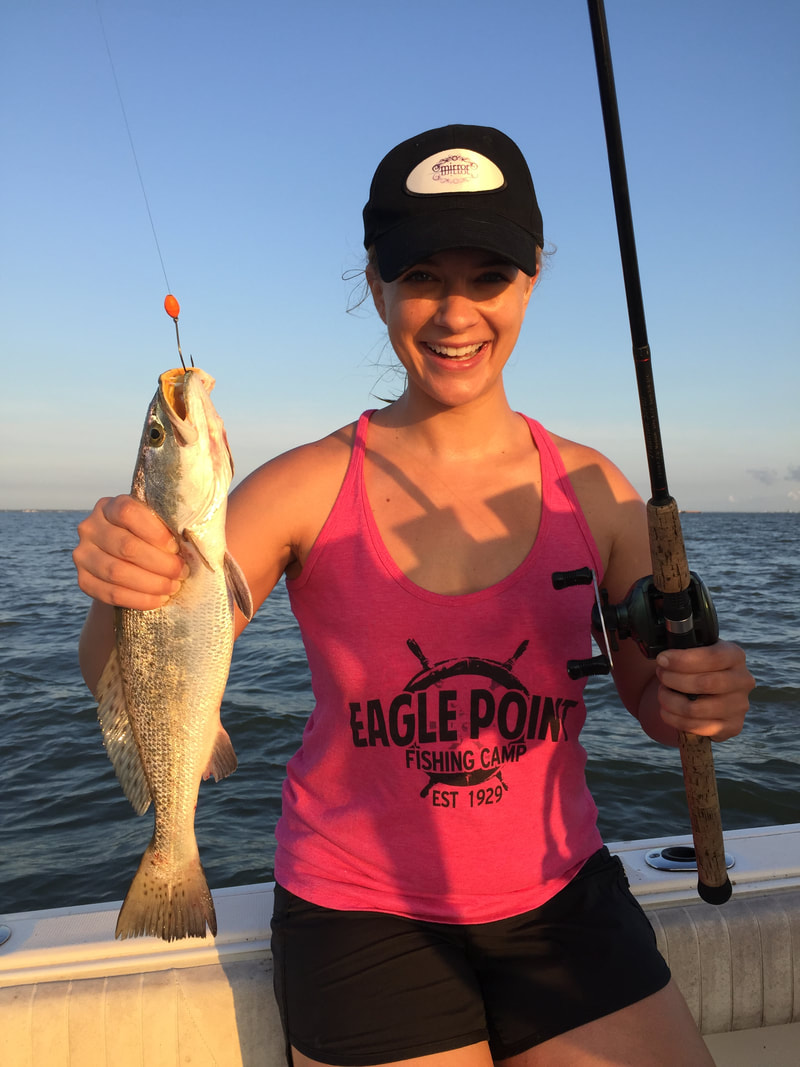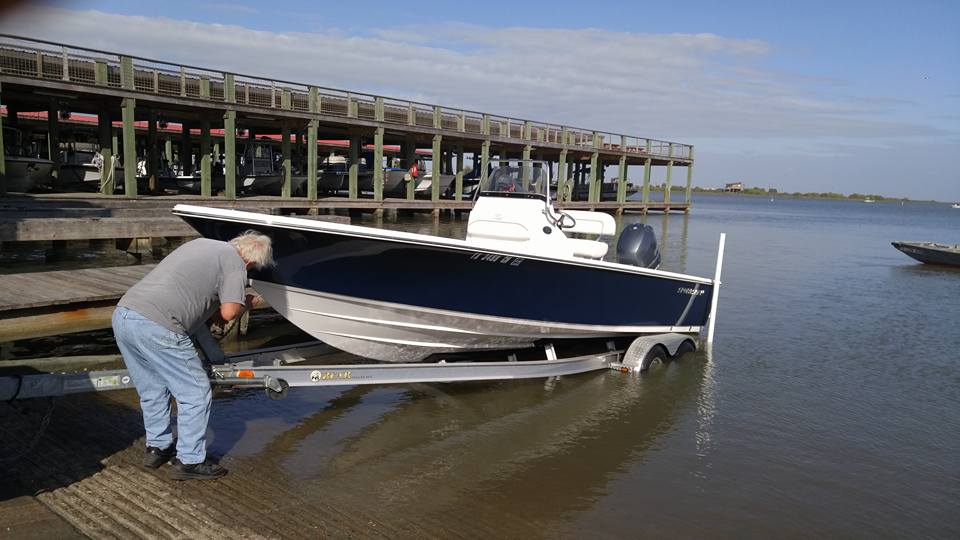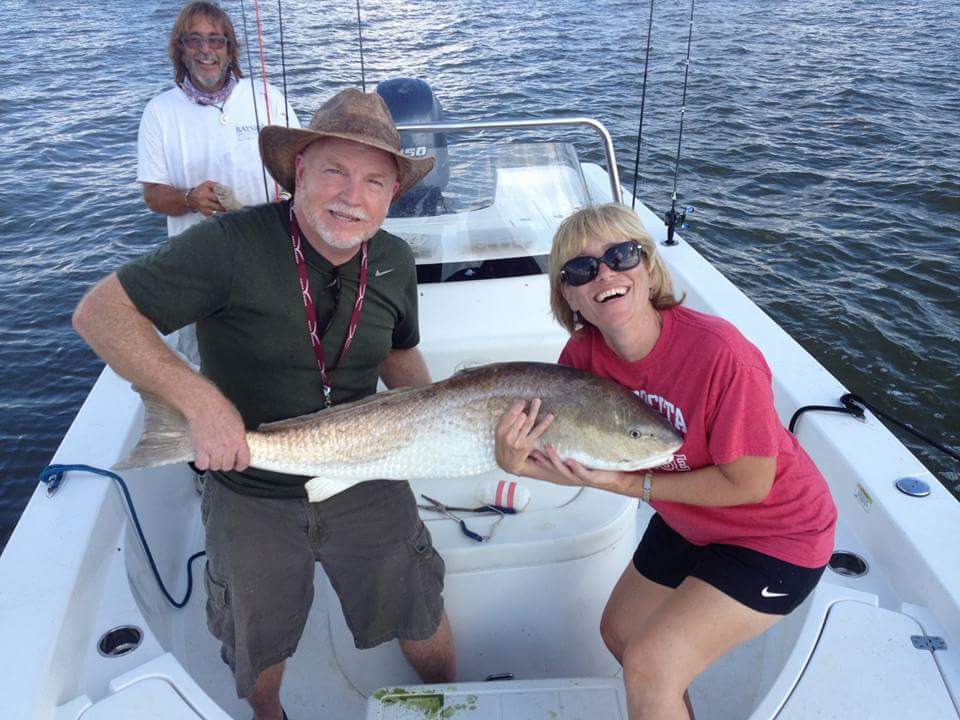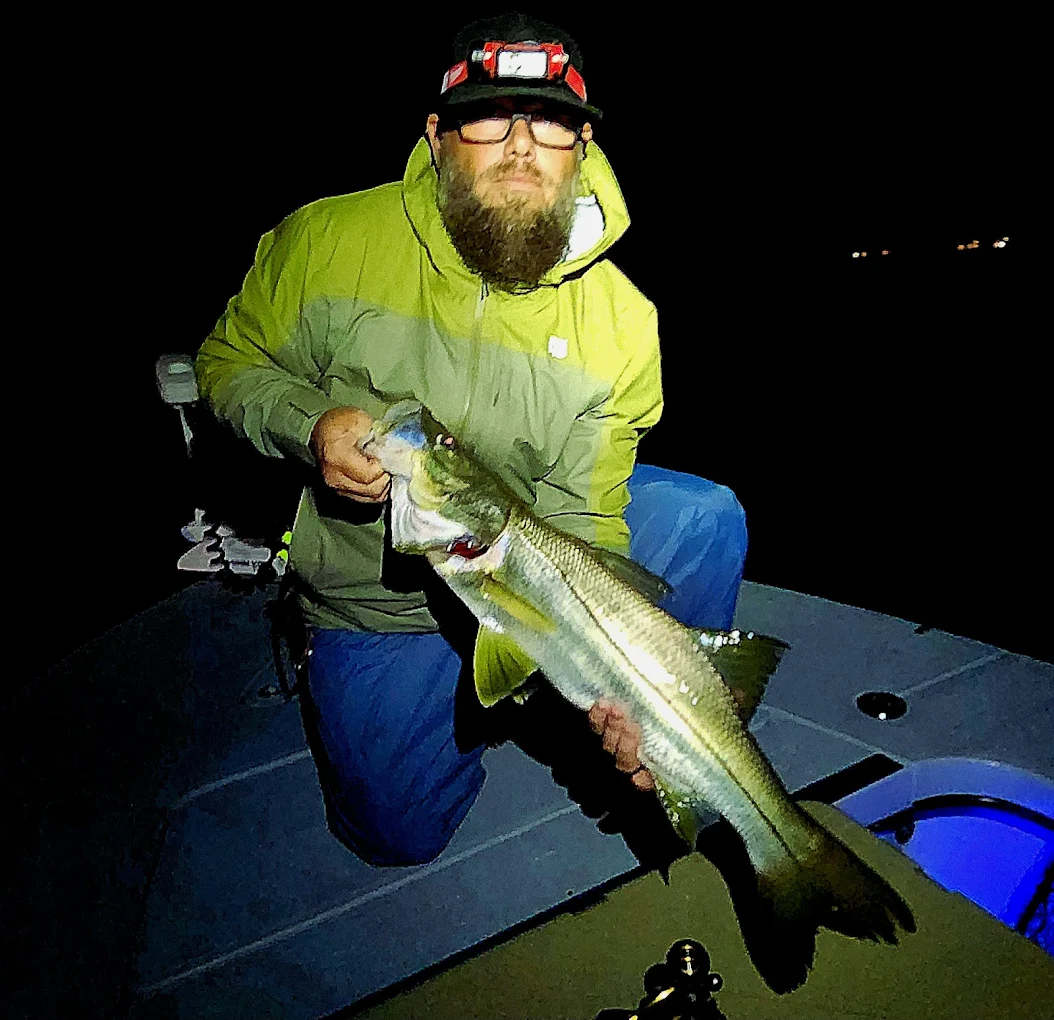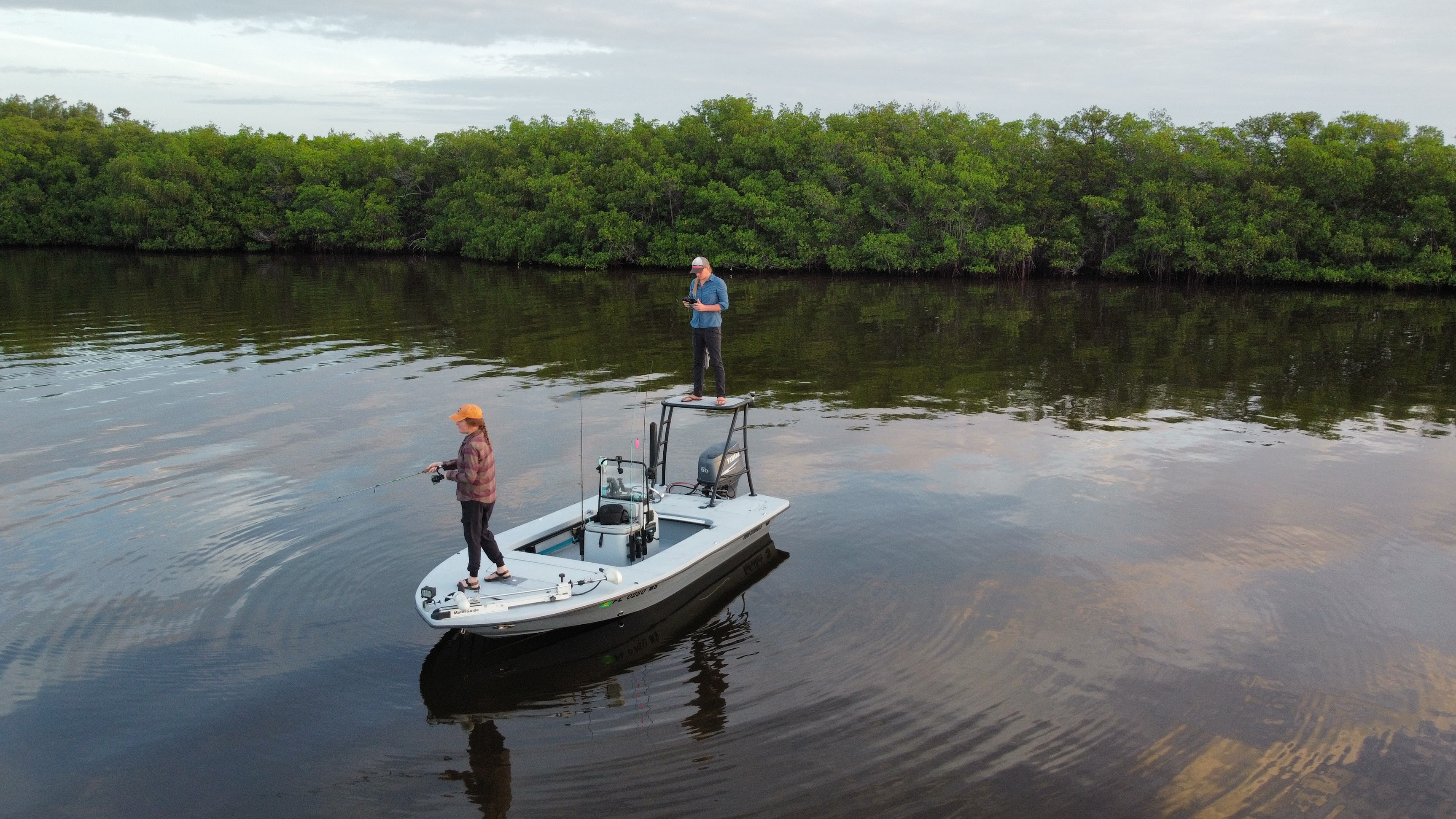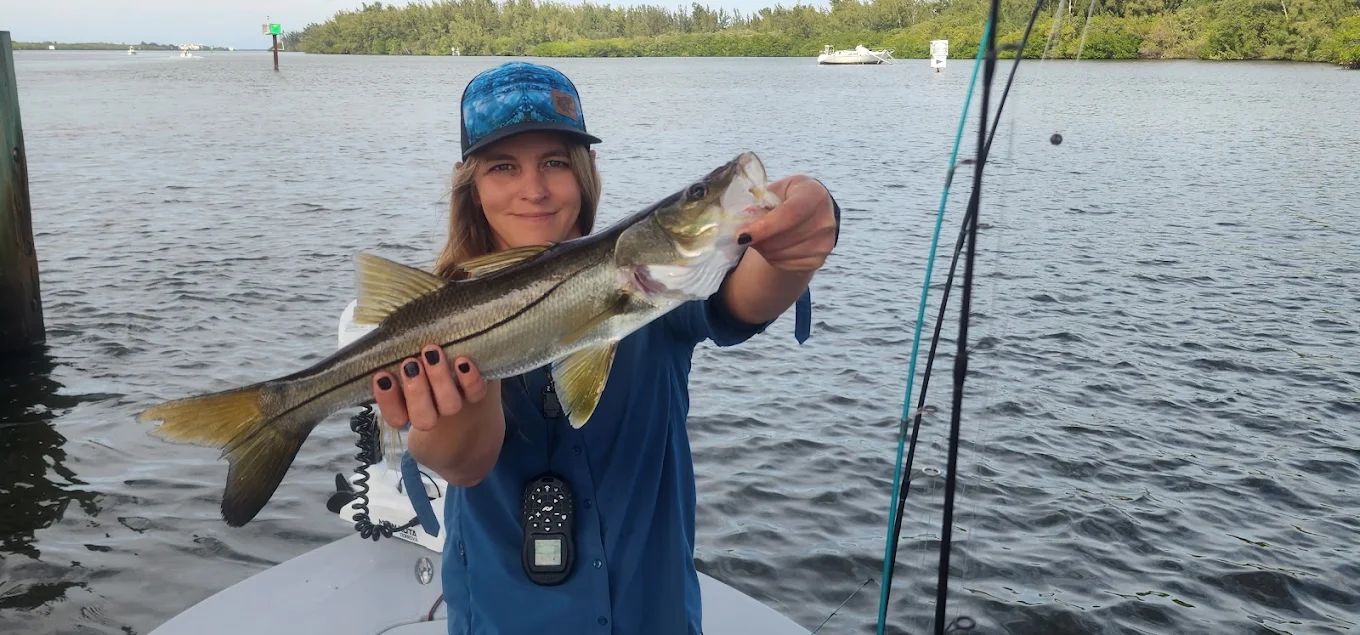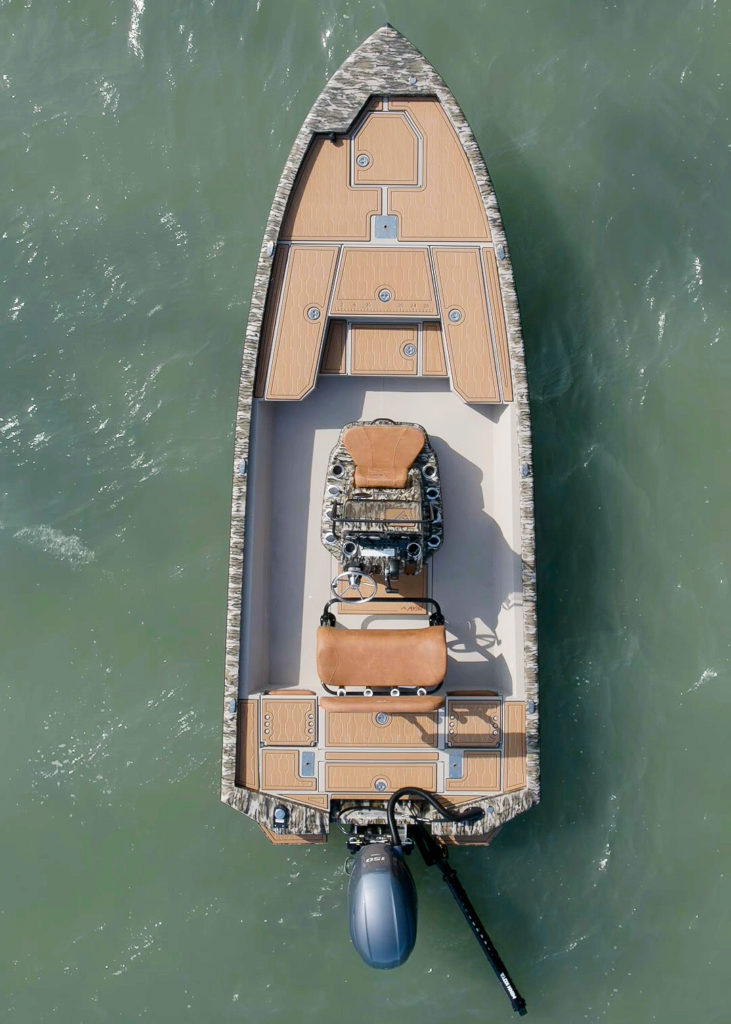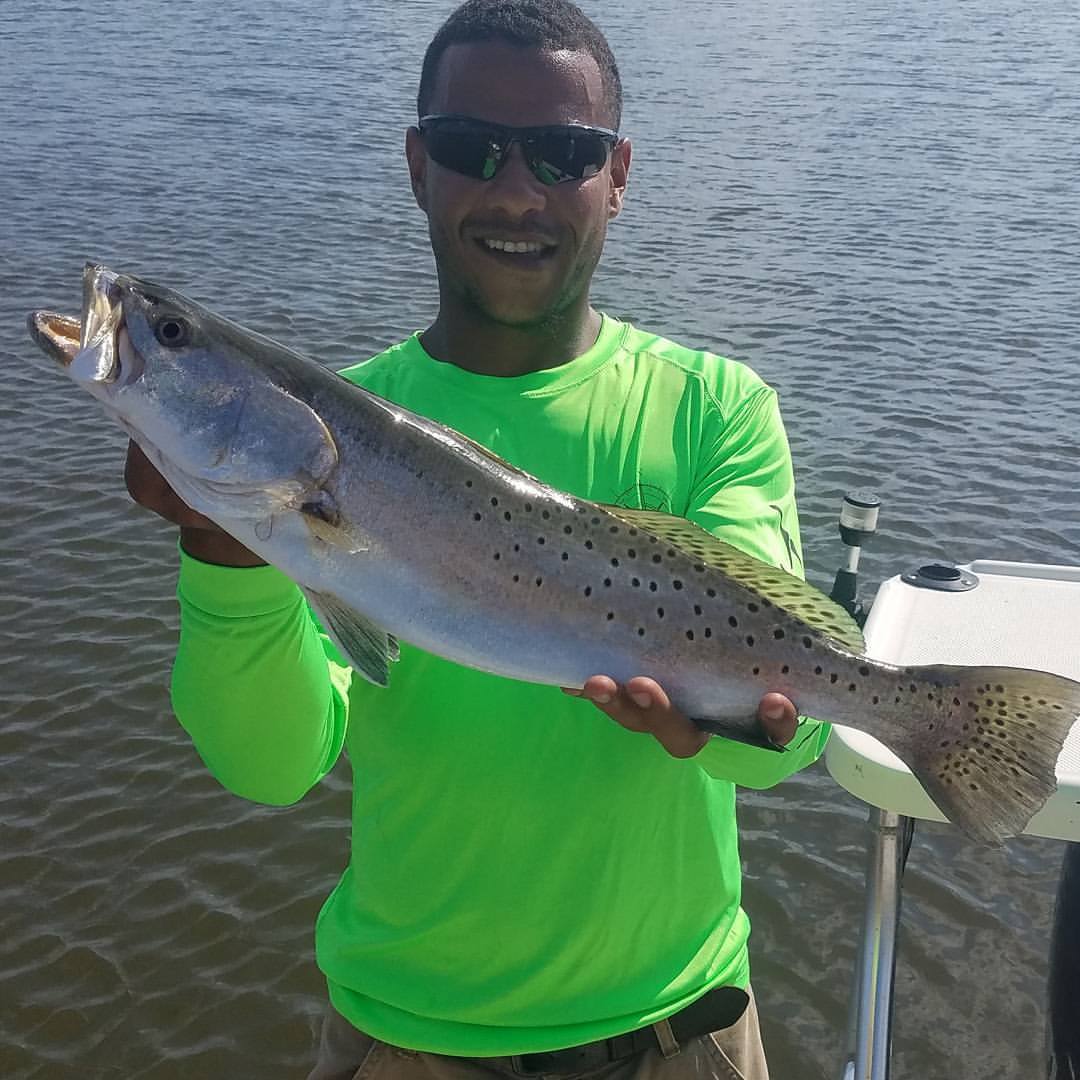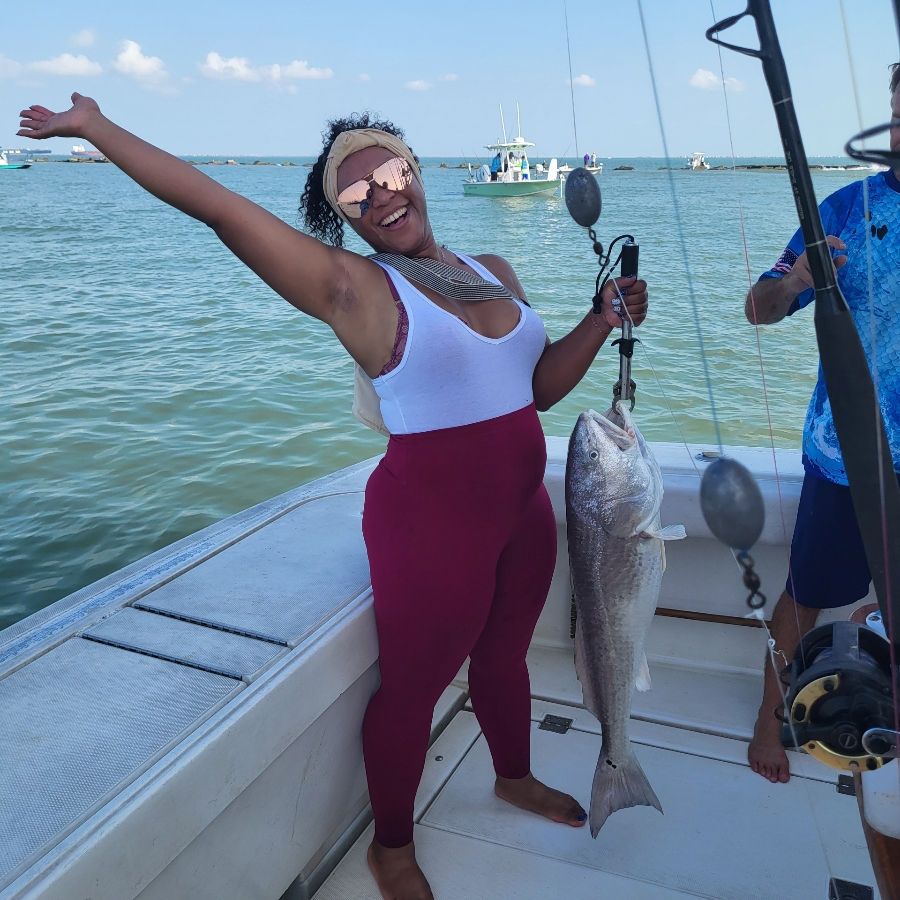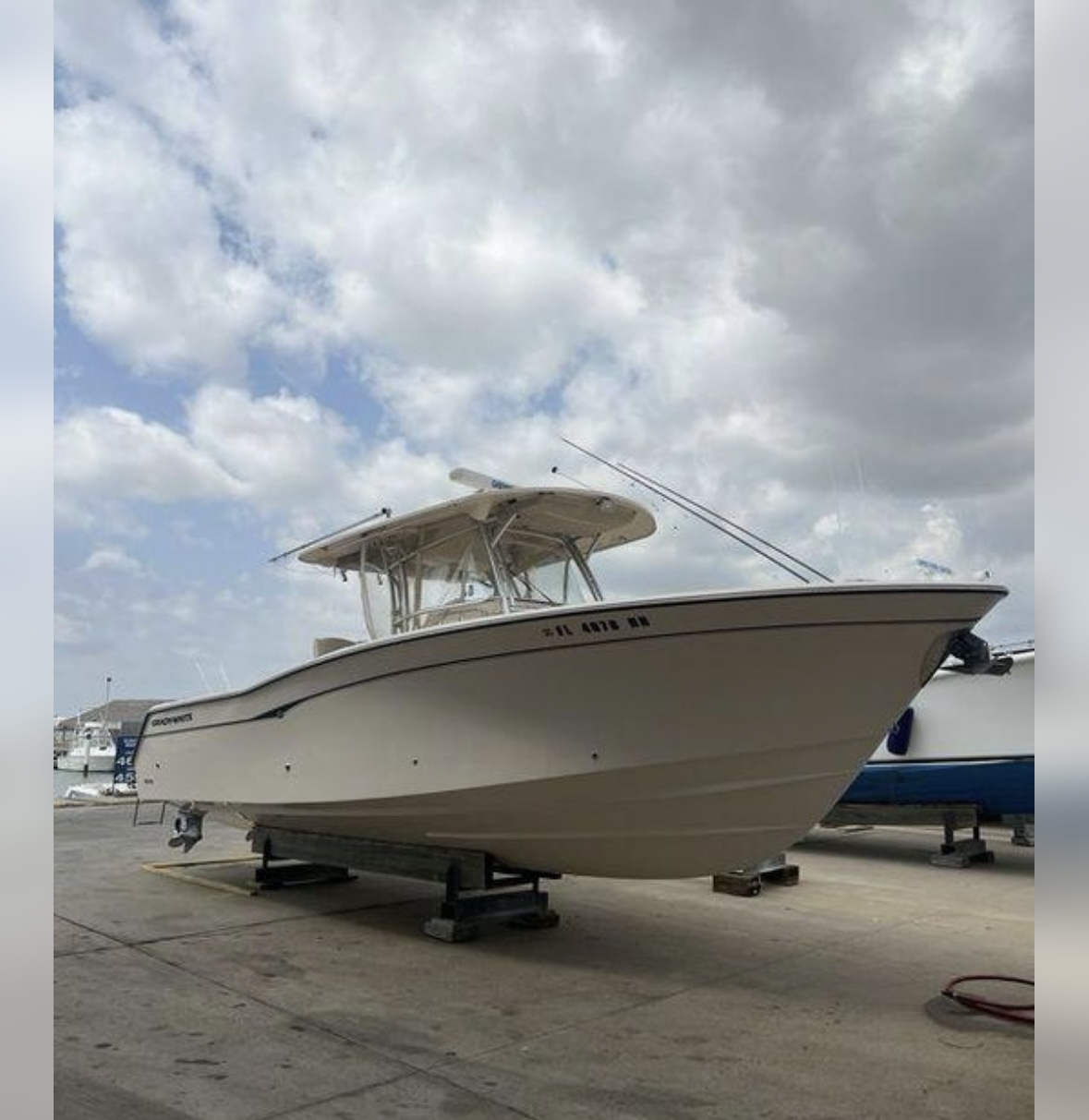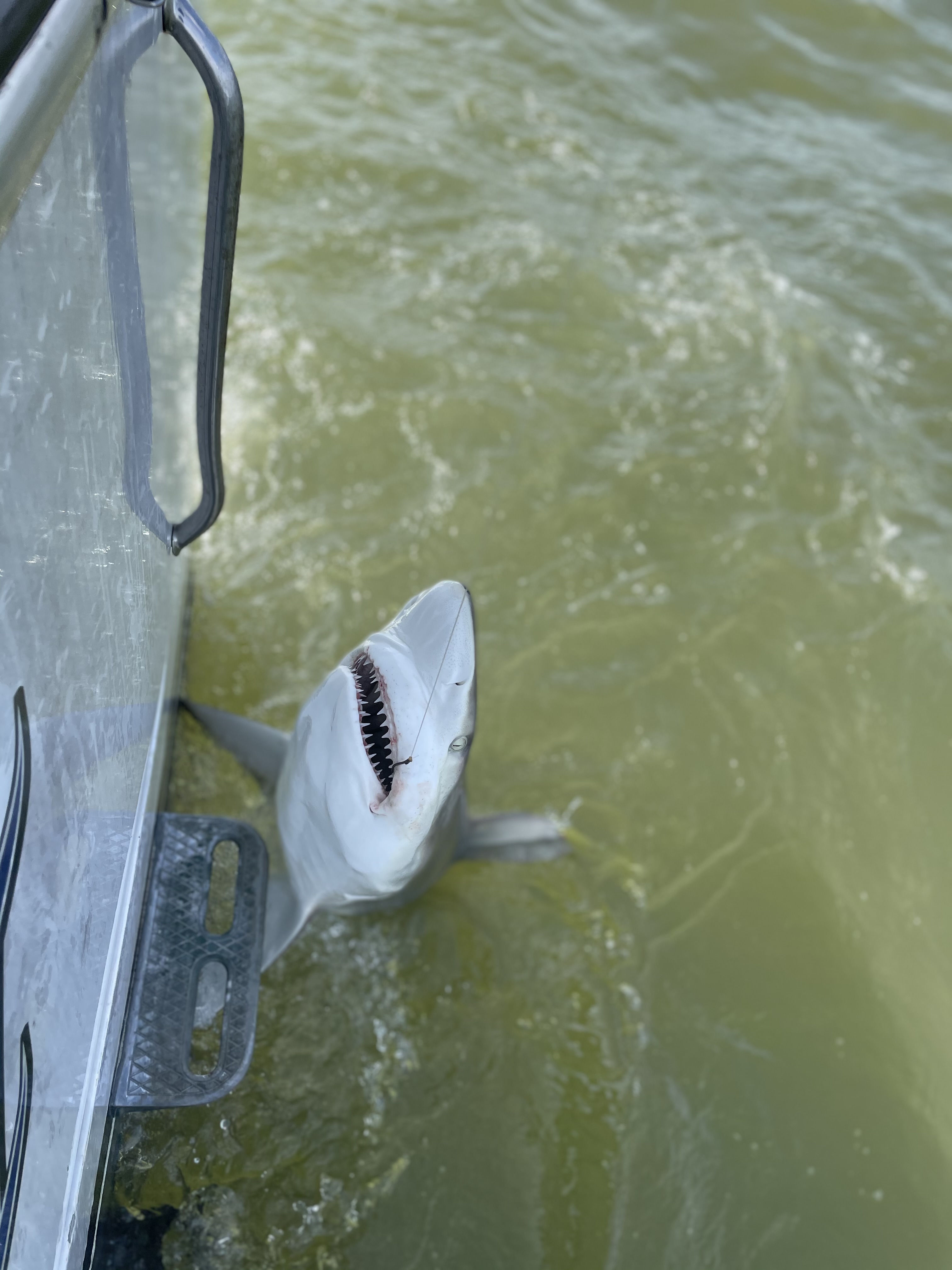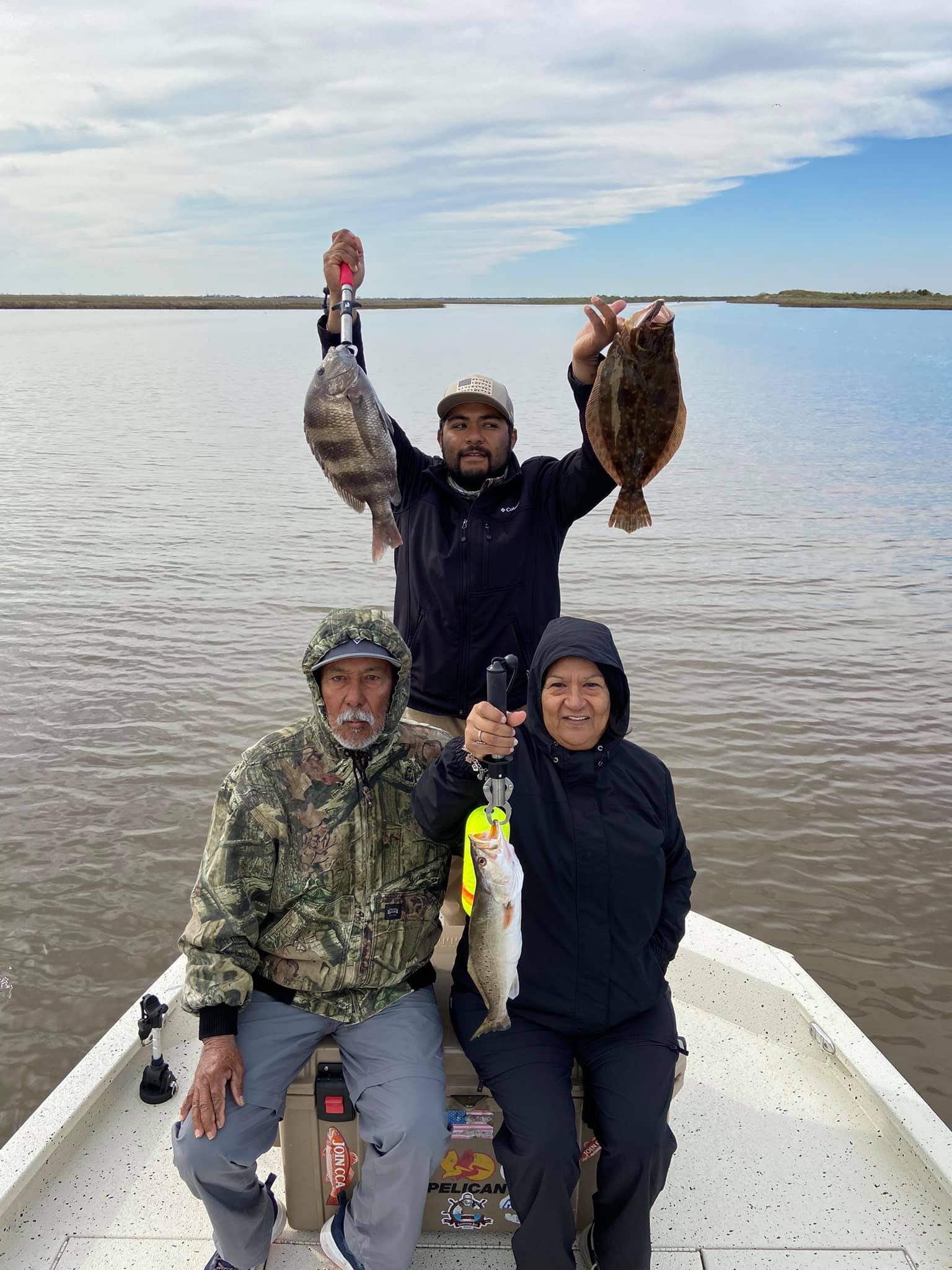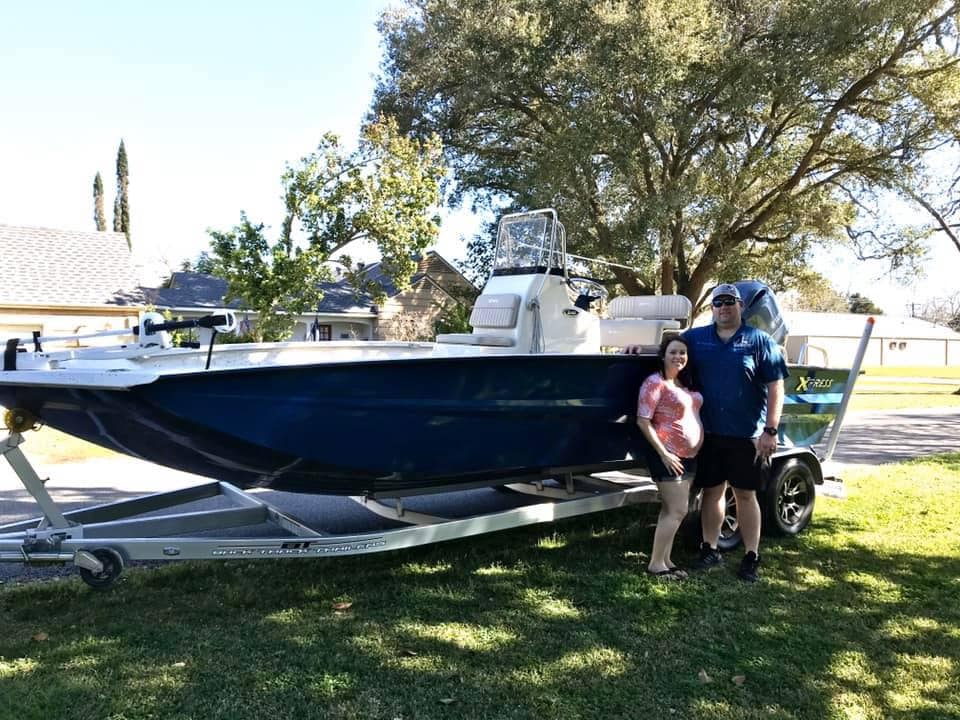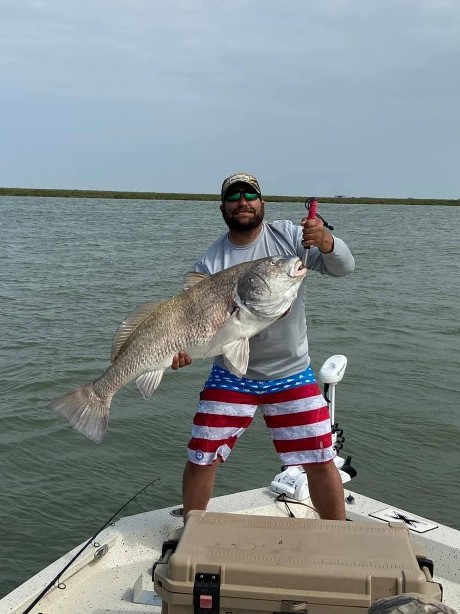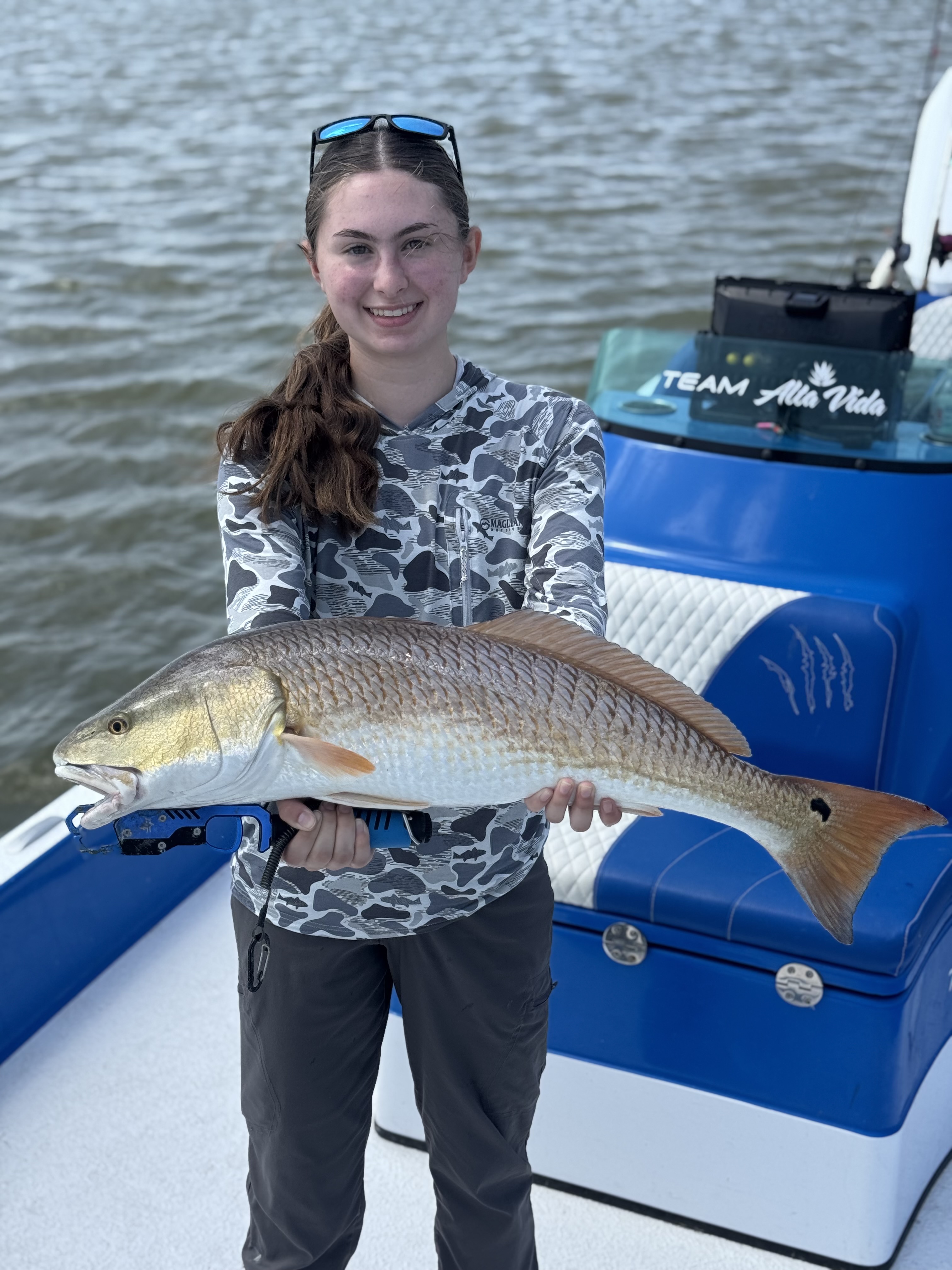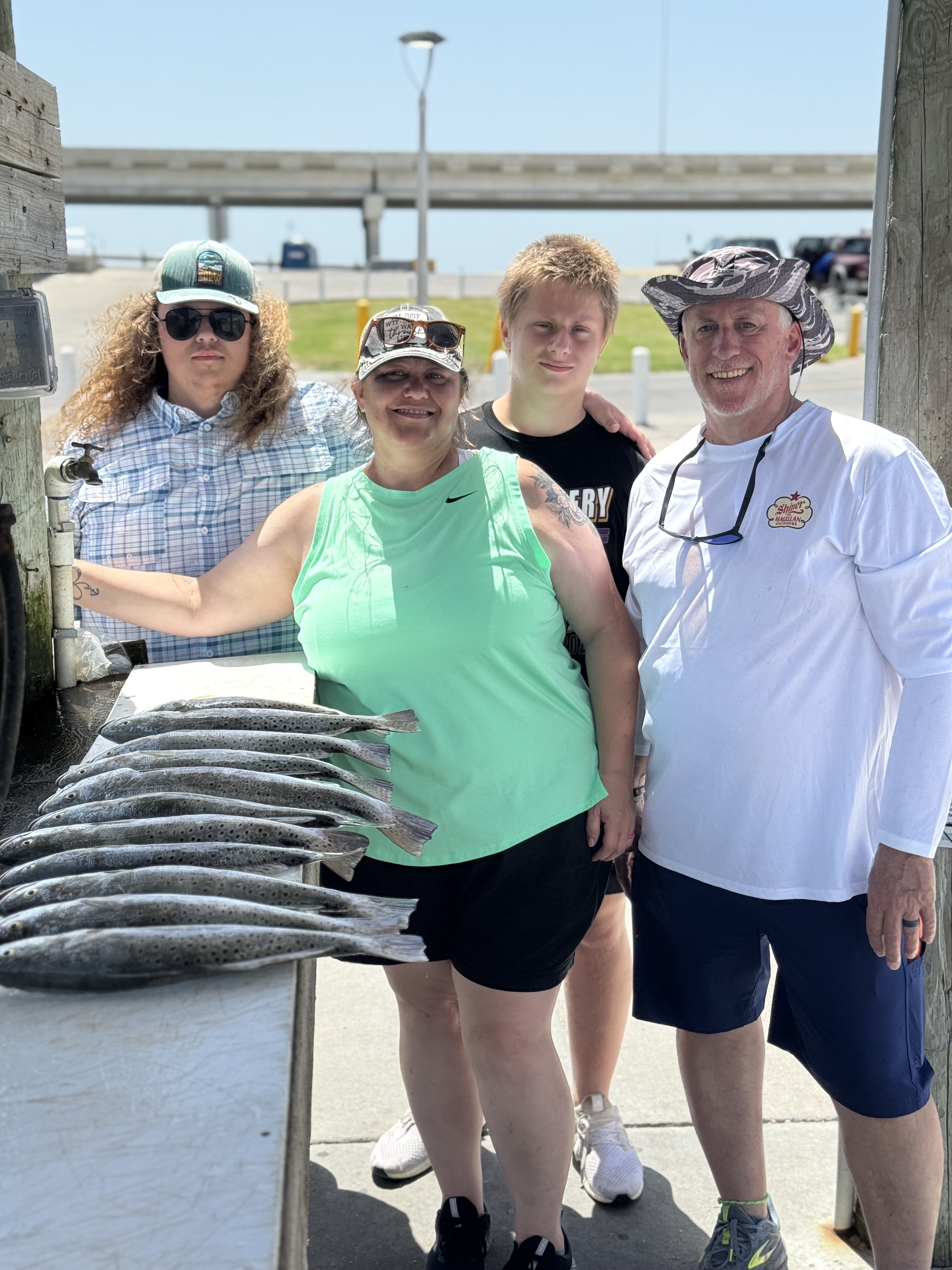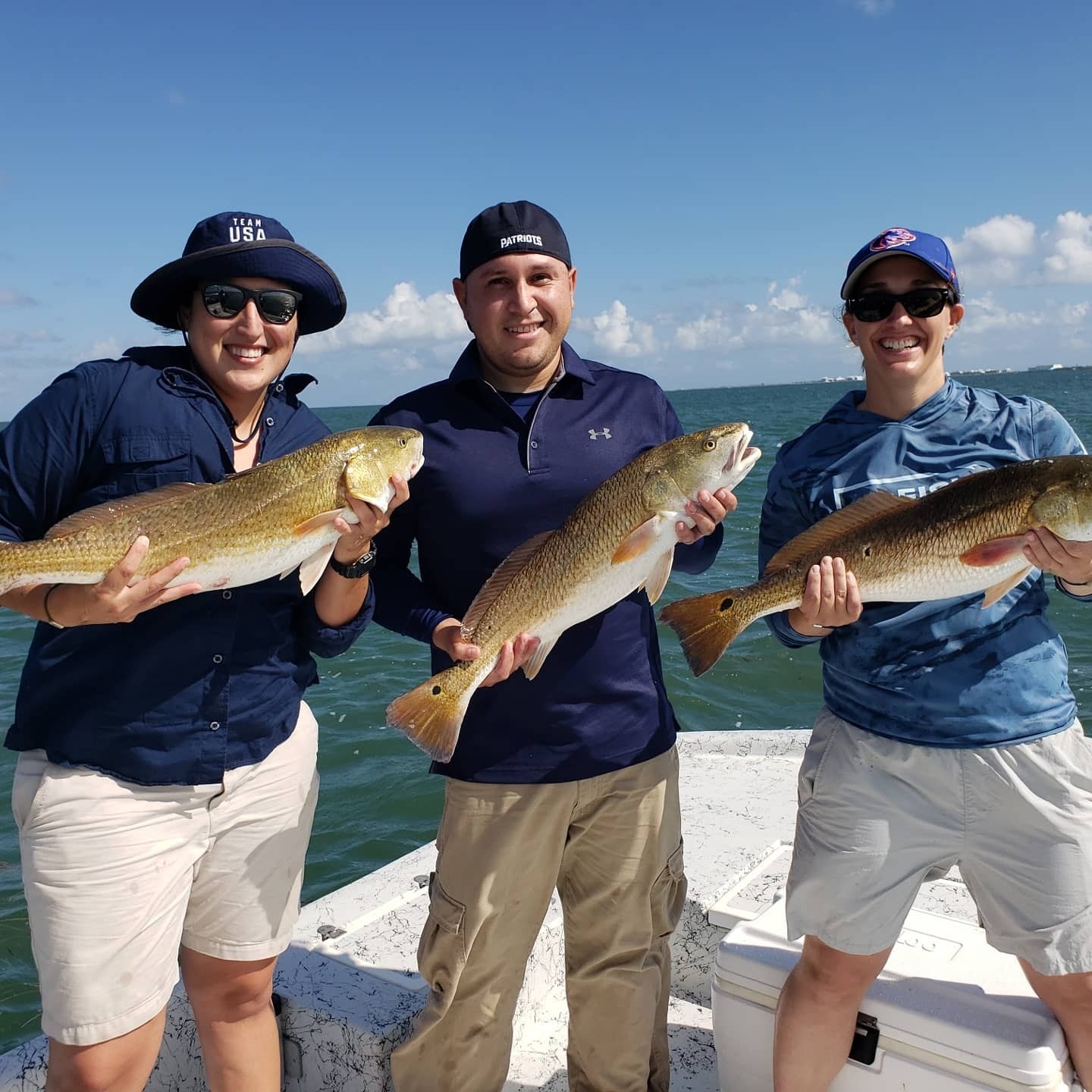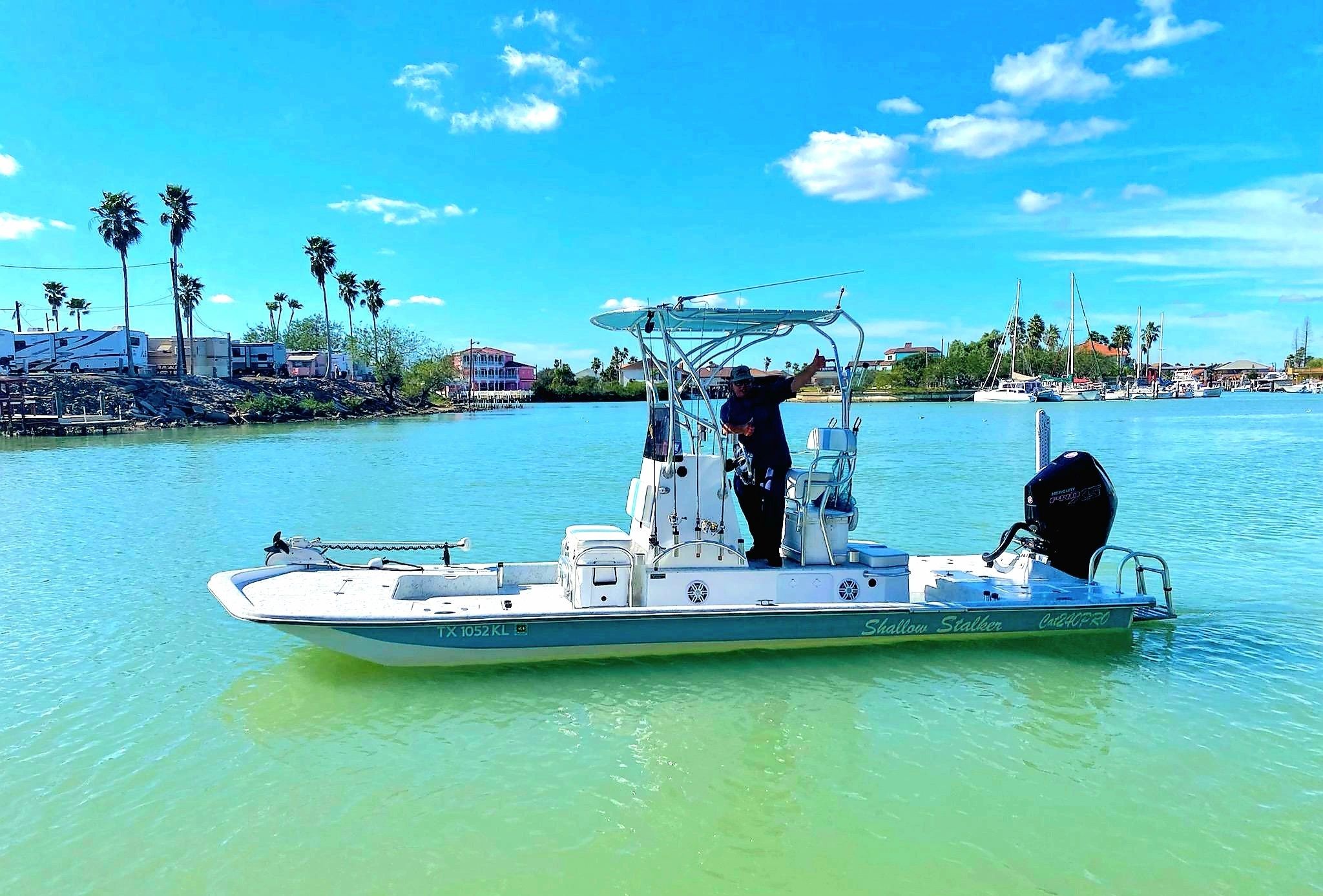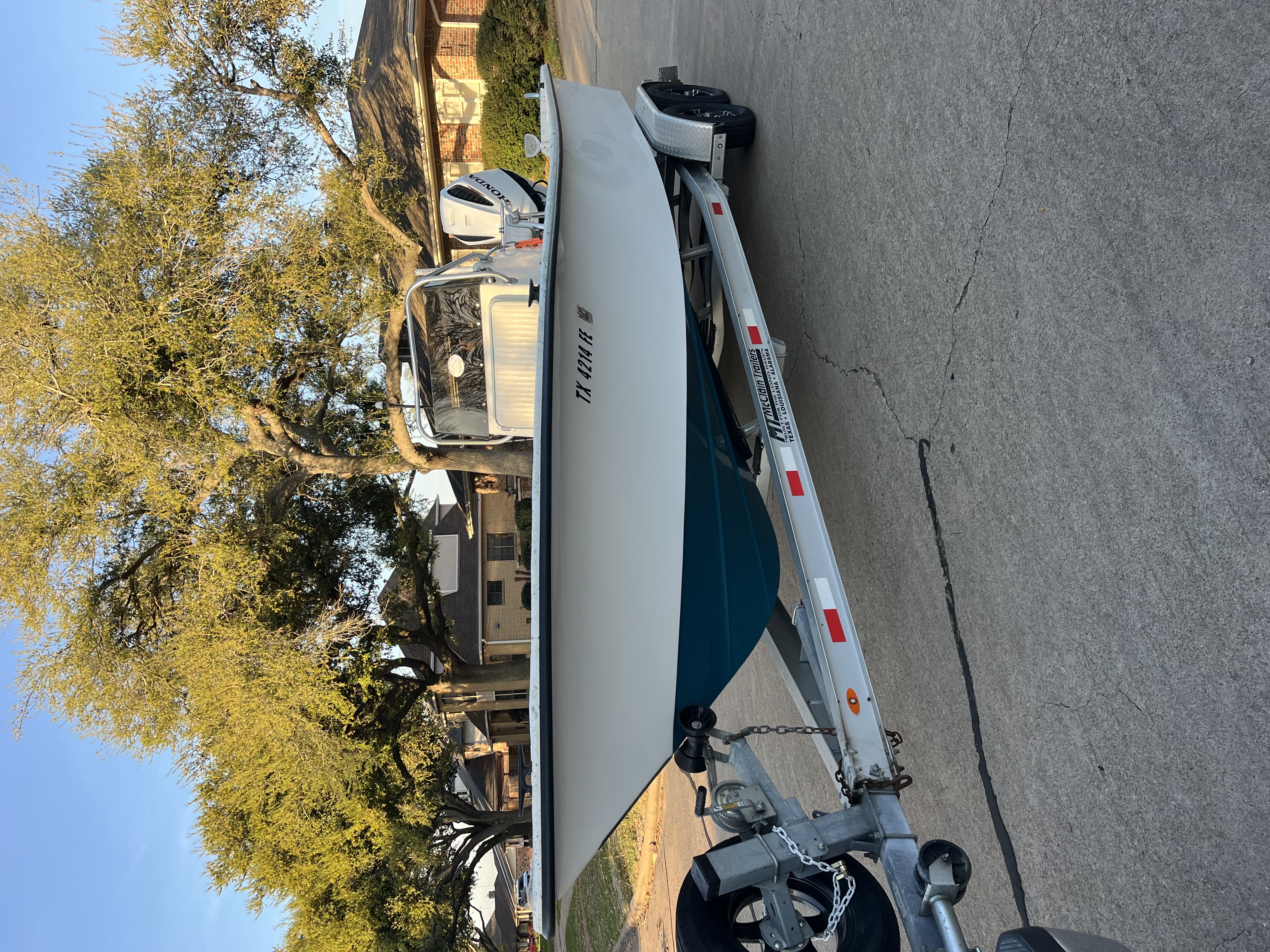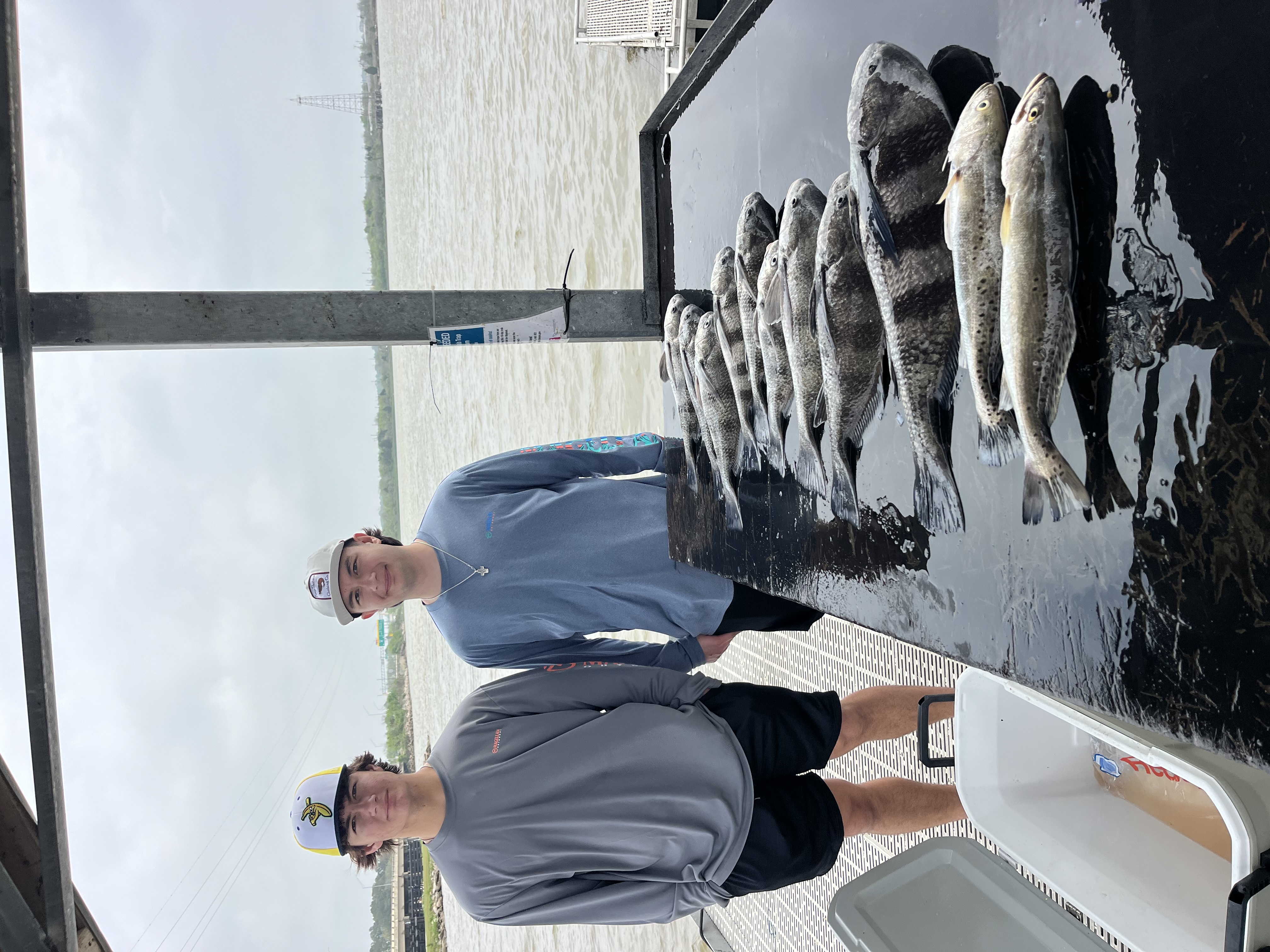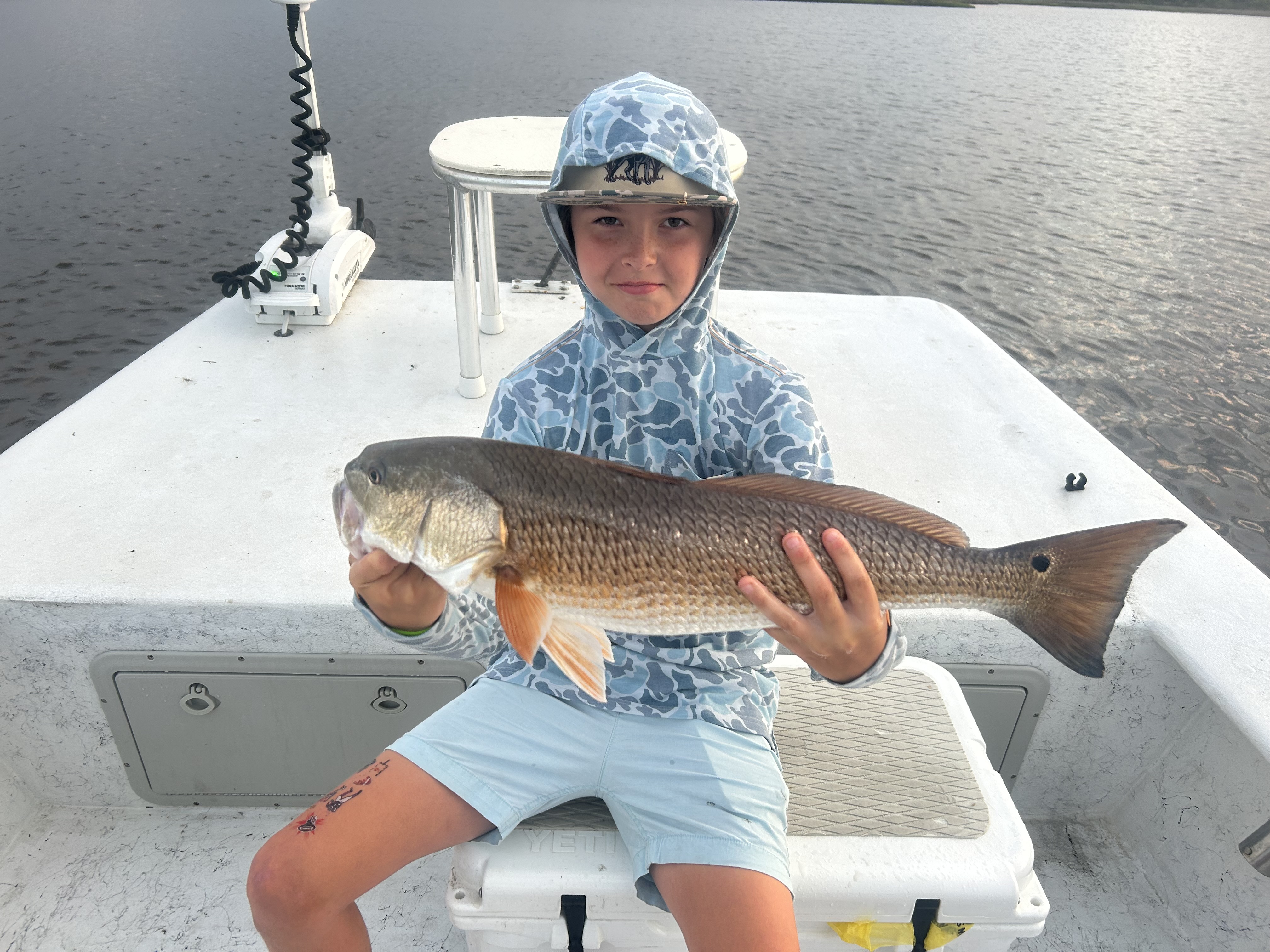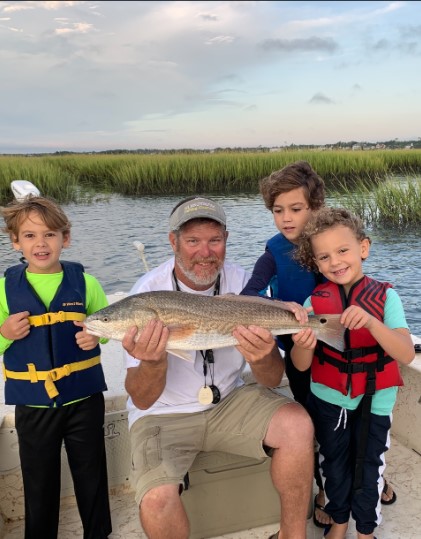Damn Good Guides
Experts Available 24/7
100% Weather Guarantee
Top Cities for Black Drum Fishing
“Our Damn Good Guides go above and beyond, and we’ve handpicked every single one. We’re passionate about the outdoors and look forward to getting you out on the trip of a lifetime, every time.”
Jonathan and Attison | Co-founders | Austin, Texas
Black Drum Fishing Charters
Nearshore, Jetty, Flats in Aransas Pass
Inshore Hook-Up!
Morning 4hr Back Bay Trip.
Inshore Fishing in Corpus Christi
Nooner
Inshore, Jetty, Flats in Port O'Connor
Navigation Trip On Your Boat
Inshore, Jetty, Flats in Daytona Beach
Inshore Fishing Trip 4-6-8 Hour
Inshore, Nearshore Fishing in Morehead City
Morehead City Inshore/Nearshore
Everything to Know About Booking a black drum fishing charter
What are the best black drum fishing charters?
The best black drum fishing charters are:
What is a Black Drum?
While not quite as recognizable as its more famous cousin the redfish (or red drum), black drum are a saltwater fish from the croaker family that are so named because they can produce loud noises with their air bladder between 100 and 500 Hz when performing mating calls, and you’ll often hear this “drumming” when you pull the fish out of the water.
Young black drum are often mistaken for sheepshead due to their black and silver stripes, but they generally grow out of this as they reach maturity and adopt a more even silver-gray color. Their teeth are rounded and located in the back of their throat, and used to crush oysters, shellfish, and other mollusks and crabs. Because of this, they are often found patrolling oyster beds and shell bottoms.
Black drum are a nearshore and inshore fish found in many of the same areas as redfish. Juvenile drum will be caught inshore while more mature fish can be found further out. They are generally a robust fish, tolerating a wide variety of water conditions and temperatures, although their range is not huge, extending only through the western Atlantic and Gulf of Mexico.
How big do Black Drum get?
Black drum have a strongly arched back almost resembling that of some trevally, and as mentioned above their coloring will fade as they age and reach around 12-24 inches. Black drum can grow to 60+ inches and over 100 pounds, although more commonly are found around 15-20 pounds with inshore juveniles being at most a few pounds.
The black drum is the largest member of its family and while some bull redfish can reach massive sizes, record black drum have been bigger. This is all the more impressive for a fish that spends most of its life close to shore.
Their growth rate is highest while they are young and they reach maturity at around 2 years, but these fish can continue to grow for a long time - potentially reaching upwards of 50 years, so it’s no wonder you can find some large specimens.
What's the biggest Black Drum ever caught?
The world record black drum was a whopping 146 pounds.
Where is the best place to catch Black Drum?
Black drum live throughout the mid-western Atlantic and are common in the Gulf states, and they are an inshore-nearshore schooling fish. They can be found from Nova Scotia to Argentina, but are most common from Virginia to Texas and in particular love the Texas coast.
They are often found near rocky jetties, piers, or pilings, or otherwise can be found near their one true love: oysters. They are also known to frequent brackish estuaries and channels, and larger fish will prefer saltier water.
When should I catch Black Drum?
The best time to target black drum is February and March when they come inshore to brackish waters in large numbers for their annual spawn. They like current and structure, so you’ll find them in channels or by any sort of pilings or jetties.
You can also night fish for black drum with some success, and otherwise stick to structure and you can’t go wrong.
How do you catch Black Drum?
Black drum are not particularly good fighters pound-for-pound, but they make up for this by reaching gargantuan sizes for an inshore fish, and they will use their heft to their advantage. They won’t make crazy runs, but they will fight you like a bulldog and refuse to surface (they sometimes even feel like a shark that is just continually pulling).
Black drum are bottom feeders, so you’ll want to drop your line to the bottom or suspended a few feet above. Jigging is a common method. Shrimp works well as can squid, and crabs are great if you have them, and you can use a circle hook (no need to set the hook!).
Since black drum usually feed based on scent, feel free to up the size of your tackle to make sure you wont break the fish off.
Are Black Drum good to eat? What are the best Black Drum recipes?
Black drum are generally only kept at the low-end of the slot limit, or about 14-15 pounds. Below that weight the have a moderate taste similar to a redfish. Above that, larger drum typically have tougher meat, have tougher scales that can be hard to remove, and can often attract some parasites as they age (especially since they can live for so long).
Smaller drum are tasty and the only challenge is generally removing the large scales, so its generally best to fillet them and remove the skin as well, and many regulars invest in an electric fillet knife.
Recent Reviews
Cities
- Apalachicola, FL
- Aransas Pass, TX
- Atlantic Beach, NC
- Barataria, LA
- Bay City, TX
- Bay St. Louis, MS
- Baytown, TX
- Beaufort, NC
- Belleair Bluffs, FL
- Biloxi, MS
- Bolivar Peninsula, TX
- Bon Secour, AL
- Bradenton, FL
- Brownsville, TX
- Brunswick, GA
- Cape Coral, FL
- Carolina Beach, NC
- Cedar Key, FL
- Cedar Point, NC
- Charleston, SC
- Chauvin, LA
- Chincoteague, VA
- Clearwater, FL
- Cocoa Beach, FL
- Corpus Christi, TX
- Crawfordville, FL
- Crystal River, FL
- Cypremort Point, LA
- D'Iberville, MS
- Darien, GA
- Daytona Beach, FL
- Deale, MD
- Delacroix, LA
- Destin, FL
- Dickinson, TX
- Eastpoint, FL
- Eden Isle, LA
- Edgewater, FL
- Elberta, AL
- Everglades City, FL
- Falmouth, MA
- Fernandina Beach, FL
- Flagler Beach, FL
- Folly Beach, SC
- Fort Myers Beach, FL
- Fort Pierce, FL
- Fort Walton Beach, FL
- Freeport, TX
- Fulton, TX
- Galveston, TX
- Goodland, FL
- Goose Creek, SC
- Grand Isle, LA
- Groves, TX
- Gulf Breeze, FL
- Gulf Shores, AL
- Gulfport, FL
- Gulfport, MS
- Hampstead, NC
- Harkers Island, NC
- Hilton Head Island, SC
- Hitchcock, TX
- Holmes Beach, FL
- Homestead, FL
- Houma, LA
- Houston, TX
- Hudson, FL
- Indian Rocks Beach, FL
- Ingleside, TX
- Inglis, FL
- Islamorada, FL
- Jacksonville, FL
- Jacksonville Beach, FL
- Jensen Beach, FL
- Jerome, FL
- Johns Island, SC
- Jupiter, FL
- Kemah, TX
- Key Biscayne, FL
- Key Largo, FL
- Kure Beach, NC
- Lafitte, LA
- Lake Charles, LA
- Lamont, FL
- Little River, SC
- Loreto, Mexico
- Mandeville, LA
- Manteo, NC
- Marco Island, FL
- Matagorda, TX
- Melbourne, FL
- Melbourne Beach, FL
- Merritt Island, FL
- Milton, FL
- Mims, FL
- Mobile, AL
- Morehead City, NC
- Mount Pleasant, SC
- Murrells Inlet, SC
- Myrtle Beach, SC
- Naples, FL
- New Bern, NC
- New Orleans, LA
- New Smyrna Beach, FL
- Newport, NC
- Niceville, FL
- Norfolk, VA
- North Charleston, SC
- North Topsail Beach, NC
- Oak Hill, FL
- Ocean City, MD
- Ocean Isle Beach, NC
- Ochopee, FL
- Orange Beach, AL
- Ormond Beach, FL
- Oxford, MD
- Palacios, TX
- Palm Coast, FL
- Palm Harbor, FL
- Panacea, FL
- Panama City, FL
- Panama City Beach, FL
- Pass Christian, MS
- Pensacola, FL
- Pensacola Beach, FL
- Pointe à la Hache, LA
- Port Aransas, TX
- Port Arthur, TX
- Port Canaveral, FL
- Port Charlotte, FL
- Port Isabel, TX
- Port Mansfield, TX
- Port O'Connor, TX
- Port Orange, FL
- Port Royal, SC
- Punta Gorda, FL
- Riverview, FL
- Rockport, TX
- Ruskin, FL
- Safety Harbor, FL
- Saint Bernard, LA
- Saint George Island, FL
- San Leon, TX
- Santa Rosa Beach, FL
- Sarasota, FL
- Savannah, GA
- Seabrook, TX
- Seadrift, TX
- Shalimar, FL
- Slidell, LA
- Sneads Ferry, NC
- South Padre Island, TX
- Southport, NC
- Spring Hill, FL
- St. Augustine, FL
- St. Petersburg, FL
- Stone Harbor, NJ
- Stuart, FL
- Sulphur, LA
- Surfside Beach, TX
- Tampa, FL
- Tarpon Springs, FL
- Tavernier, FL
- Texas City, TX
- Tiki Island, TX
- Titusville, FL
- Townsend, GA
- Treasure Island, FL
- Tybee Island, GA
- Venice, LA
- Vero Beach, FL
- Virginia Beach, VA
- Wanchese, NC
- Washington, NC
- Webster, TX
- Wharton, TX
- Wilmington, NC
- Wrightsville Beach, NC
- Yankeetown, FL
- Yscloskey, LA
Countries
Other Fishing Species
- African Pompano
- Albacore Tuna
- Alligator Gar
- Almaco Jack
- Amberjack
- Atlantic Mackerel
- Barracuda
- Black Grouper
- Black Seabass
- Blackfin Tuna
- Blacktip Shark
- Blue Catfish
- Blue Marlin
- Bluefin Tuna
- Bluefish
- Bonefish
- Bonito
- Bonnethead Shark
- Bowfin
- Broomtail Grouper
- Bull Shark
- Bullhead Catfish
- Cero Mackerel
- Channel Catfish
- Cobia
- Crab
- Cubera Snapper
- Dusky Shark
- False Albacore
- Florida Pompano
- Flounder
- Fluke
- Freshwater Drum
- Gag Grouper
- Garfish
- Goliath Grouper
- Grunt
- Hammerhead Shark
- Hardhead Catfish
- Hogfish
- Hybrid Striped Bass
- Jack Crevalle
- Kingfish
- Ladyfish
- Lane Snapper
- Largemouth Bass
- Lemon Shark
- Longnose Gar
- Mahi Mahi
- Mako Shark
- Mangrove Snapper
- Mullet Snapper
- Mutton Snapper
- Needlefish
- Nurse Shark
- Permit
- Ray
- Red Grouper
- Red Snapper
- Redfish
- Roosterfish
- Sailfish
- Sandbar Shark
- Scallop
- Scamp Grouper
- School Shark
- Scup
- Sheepshead
- Shrimp
- Skate
- Skipjack Tuna
- Snook
- Spadefish
- Spanish Mackerel
- Speckled Trout
- Spinner Shark
- Spiny Dogfish
- Spotted Gar
- Stingray
- Striped Bass
- Striped Marlin
- Tarpon
- Tautog
- Thresher Shark
- Tiger Shark
- Tilapia
- Triggerfish
- Tripletail
- Vermillion Snapper
- Wahoo
- Weakfish
- White Seabass
- Whiting
- Yellowfin Tuna
- Yellowtail Amberjack
- Yellowtail Snapper
Hunting Species
- Black Duck
- Black-Bellied Whistling Duck
- Blue-Winged Teal
- Bluebill
- Bufflehead
- Canada Goose
- Canvasback
- Cinnamon Teal
- Common Goldeneye
- Common Merganser
- Dove
- Gadwall
- Green-Winged Teal
- Hooded Merganser
- Mallard
- Mottled Duck
- Northern Pintail
- Northern Shoveler
- Red-Breasted Merganser
- Redhead
- Ring-Necked Duck
- Ruddy Duck
- Specklebelly Goose
- Wigeon
Tour Species
Featured Cities
- Fishing Charters Near Me
- Austin Fishing Guides
- Biloxi Fishing Charters
- Bradenton Fishing Charters
- Cabo San Lucas Fishing Charters
- Cancun Fishing Charters
- Cape Coral Fishing Charters
- Charleston Fishing Charters
- Clearwater Fishing Charters
- Corpus Christi Fishing Charters
- Crystal River Fishing Charters
- Dauphin Island Fishing Charters
- Daytona Beach Fishing Charters
- Destin Fishing Charters
- Fort Lauderdale Fishing Charters
- Fort Myers Fishing Charters
- Fort Walton Beach Fishing Charters
- Galveston Fishing Charters
- Gulf Shores Fishing Charters
- Hatteras Fishing Charters
- Hilton Head Fishing Charters
- Islamorada Fishing Charters
- Jacksonville Fishing Charters
- Jupiter Fishing Charters
- Key Largo Fishing Charters
- Key West Fishing Charters
- Kona Fishing Charters
- Lakeside Marblehead Fishing Charters
- Marathon Fishing Charters
- Marco Island Fishing Charters
- Miami Fishing Charters
- Montauk Fishing Charters
- Morehead City Fishing Charters
- Naples Fishing Charters
- New Orleans Fishing Charters
- New Smyrna Beach Fishing Charters
- Ocean City Fishing Charters
- Orange Beach Fishing Charters
- Panama City Beach Fishing Charters
- Pensacola Fishing Charters
- Pompano Beach Fishing Charters
- Port Aransas Fishing Charters
- Port Orange Fishing Charters
- Rockport Fishing Charters
- San Diego Fishing Charters
- San Juan Fishing Charters
- Sarasota Fishing Charters
- South Padre Island Fishing Charters
- St. Augustine Fishing Charters
- St. Petersburg Fishing Charters
- Tampa Fishing Charters
- Tarpon Springs Fishing Charters
- Venice Fishing Charters
- Virginia Beach Fishing Charters
- West Palm Beach Fishing Charters
- Wilmington Fishing Charters
- Wrightsville Beach Fishing Charters
What's biting?
View Black Drum Fishing Reports from our damn good guides.
Didn't Find What You Were Looking For?
Our guides are Damn Good Guides, which means they’re vetted by our team of outdoor experts who know them on a first-name basis. We hand pick each and every one of them, and our network spans all across the US and beyond.
The proof is in the pudding, and we’re incredibly proud of our 4.9 / 5 average review score. Hit the button below to see more trip options:
